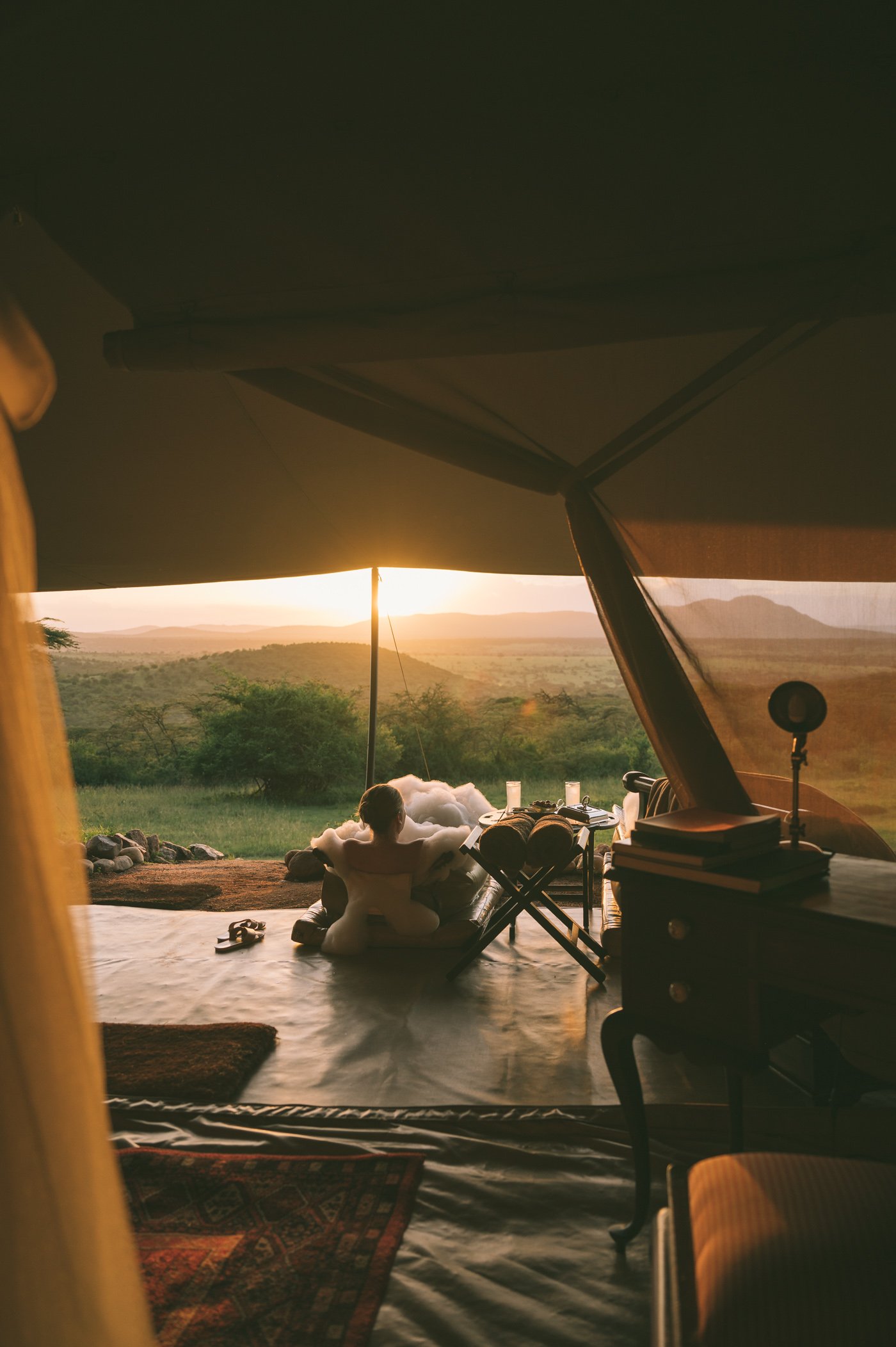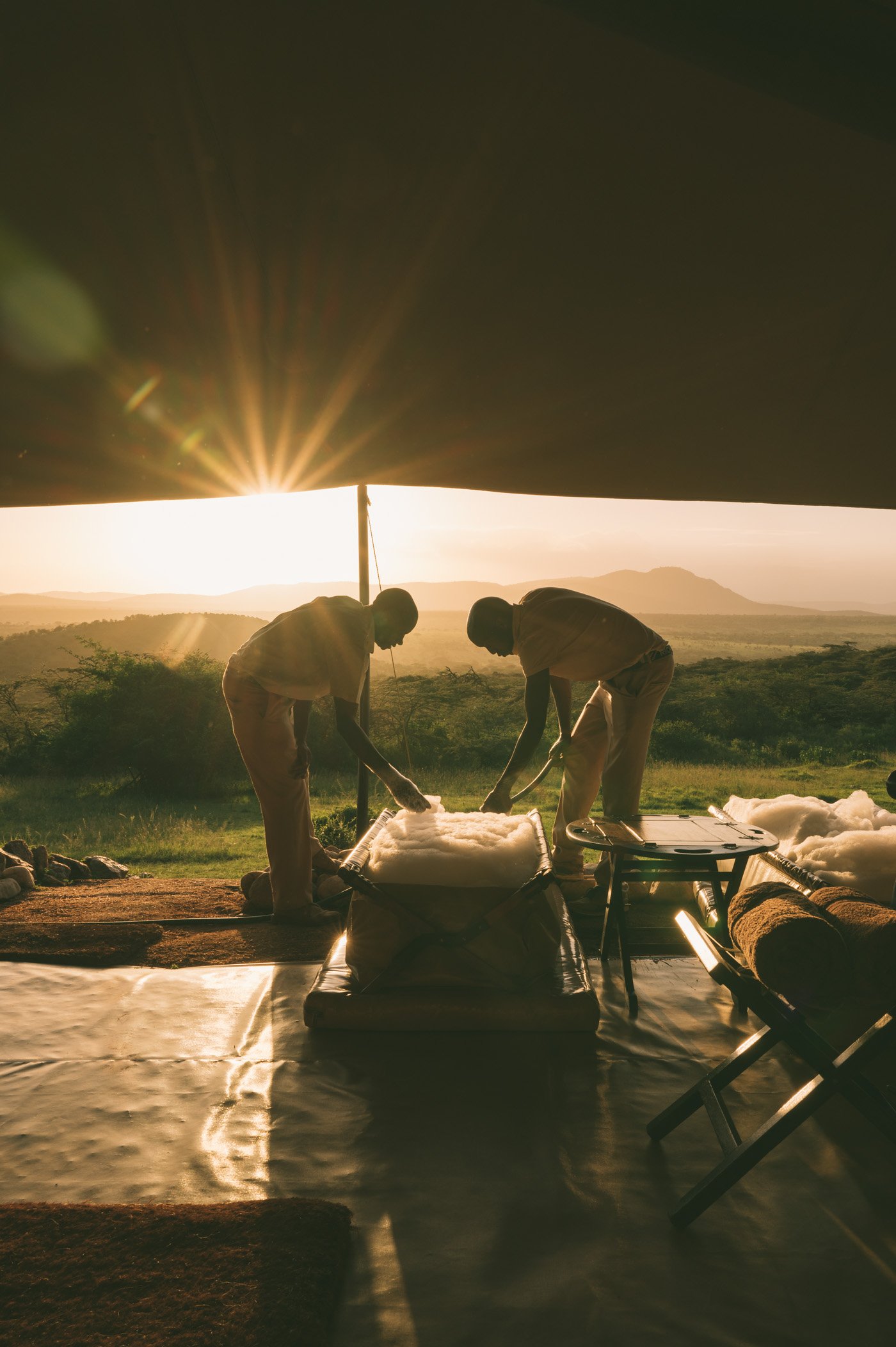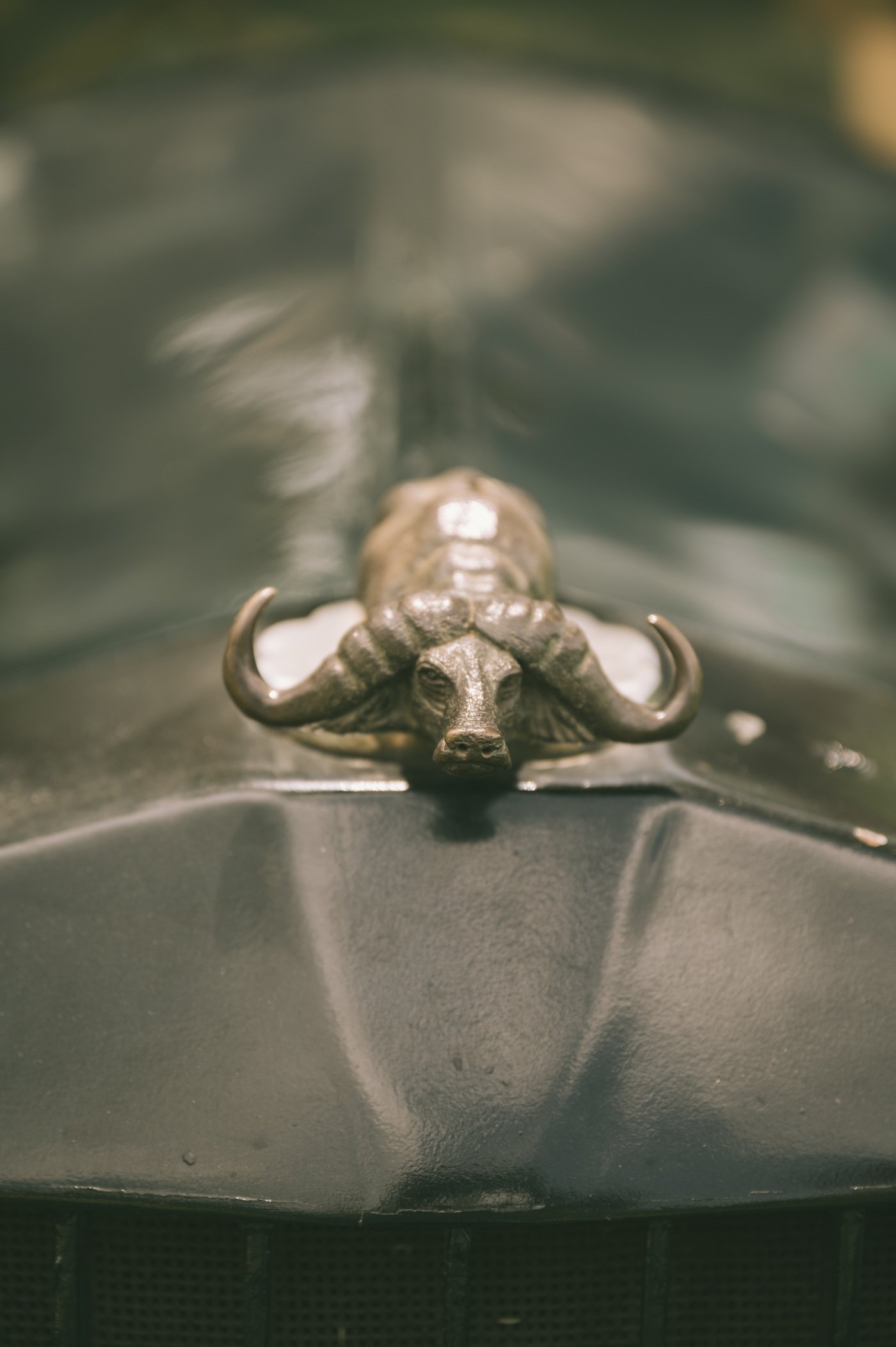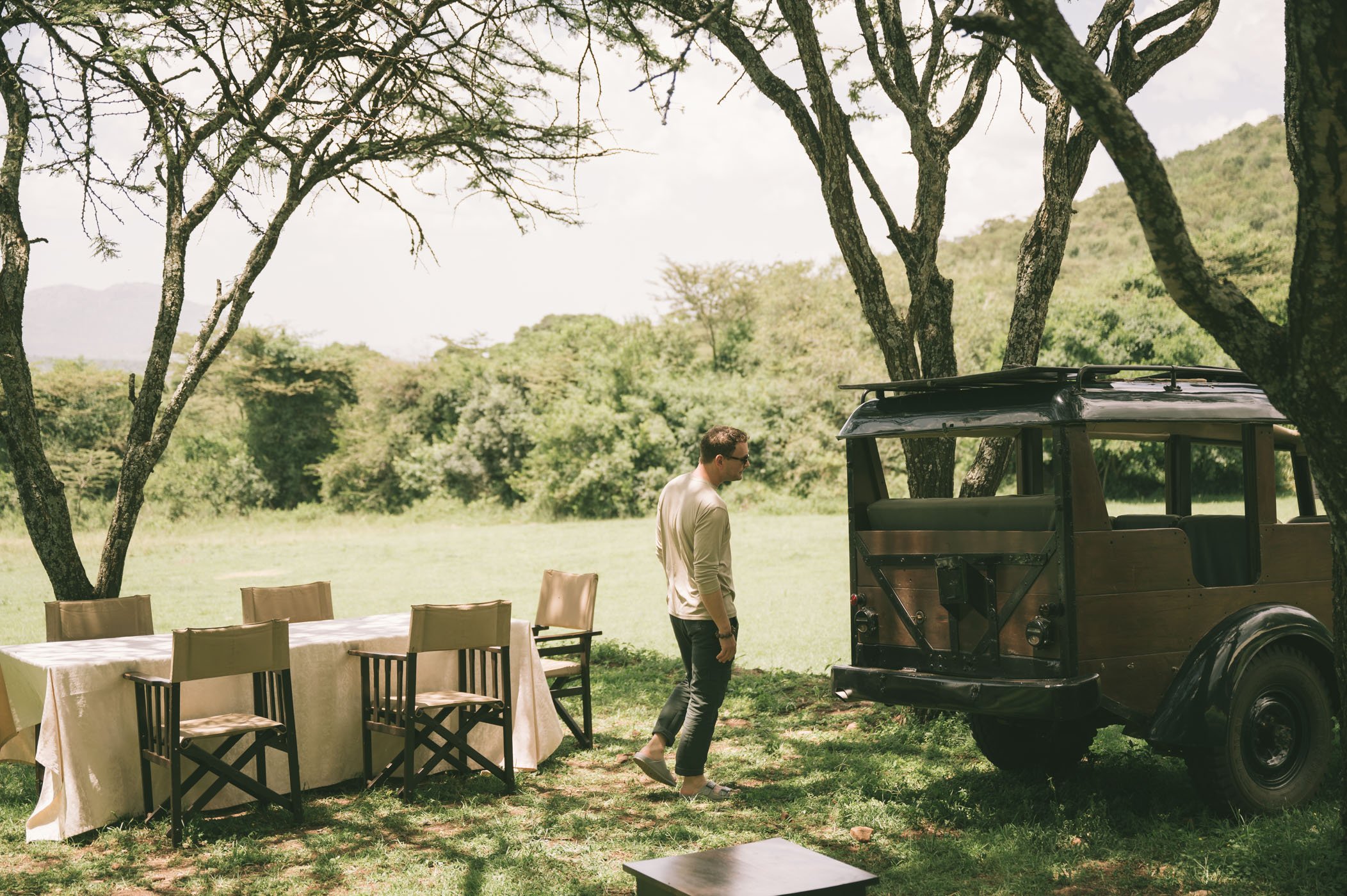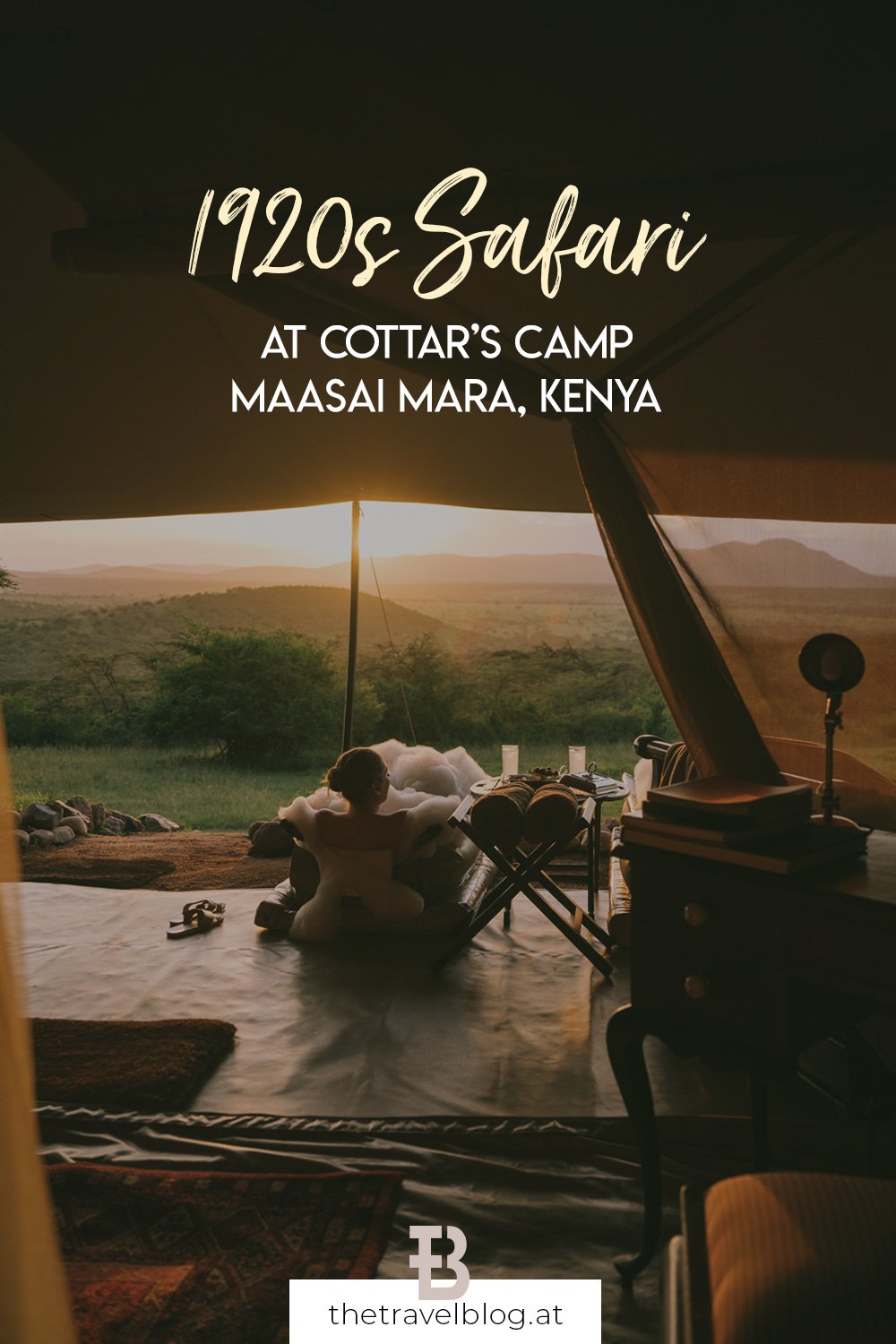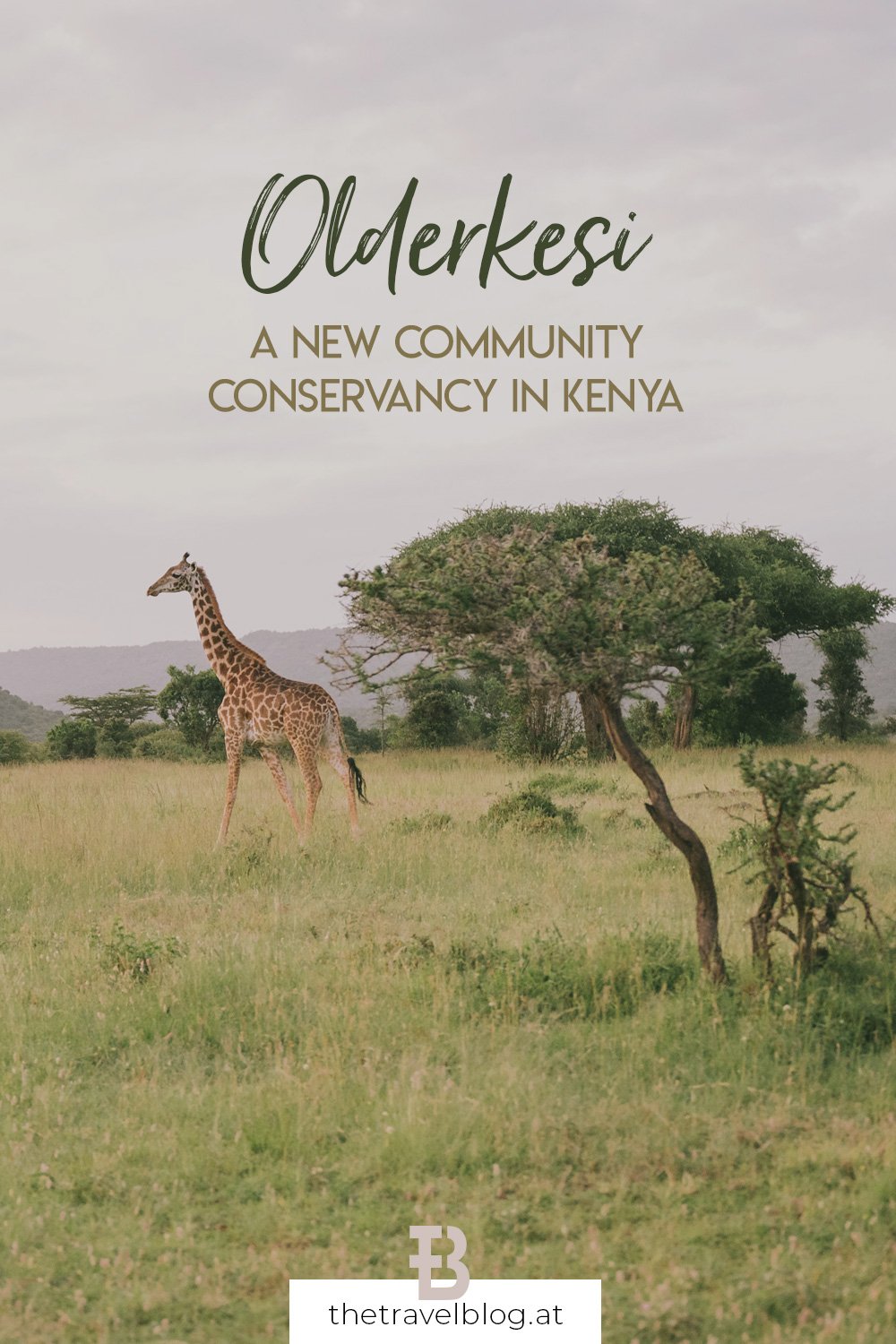It’s on the plane ride to Nairobi that I watch a stunning documentary about a rare coalition of 5 cheetah brothers roaming the Maasai Mara together on the hunt for prey. And of course the story sticks. Might we be able to witness them in action? Where in the Maasai Mara are they hiding? And how likely is it to encounter them in a reserve three times the size of Vienna?
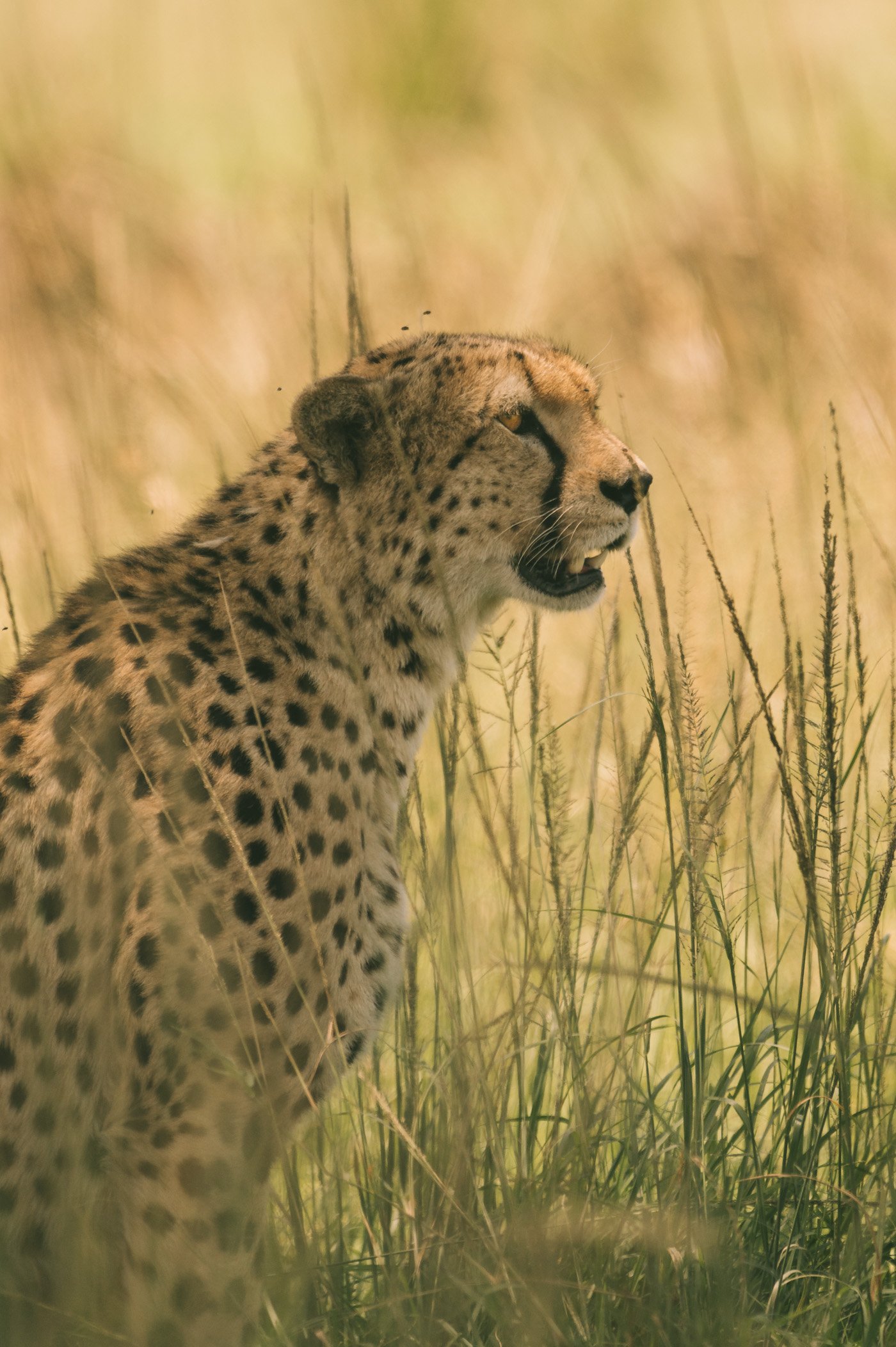
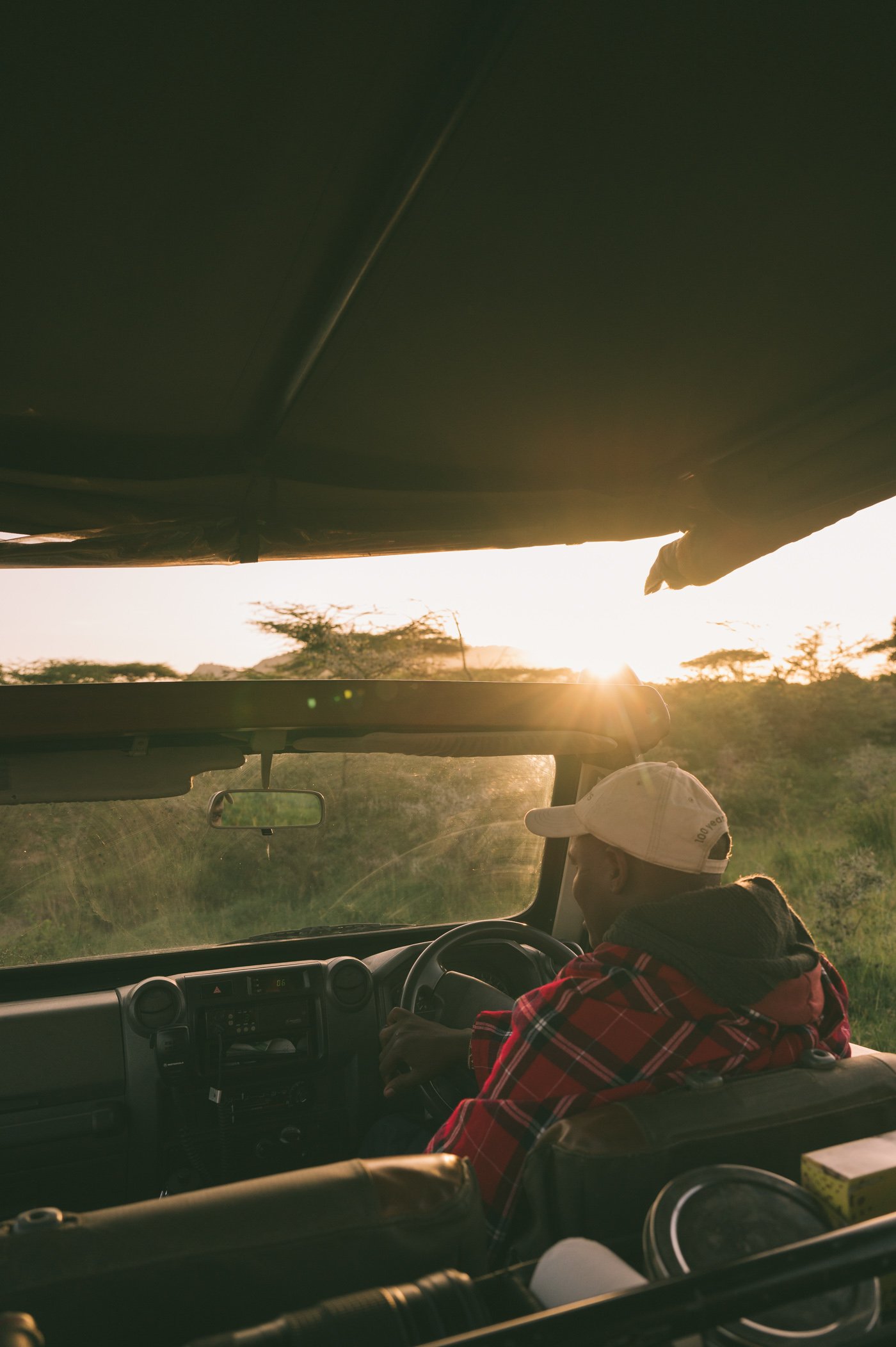
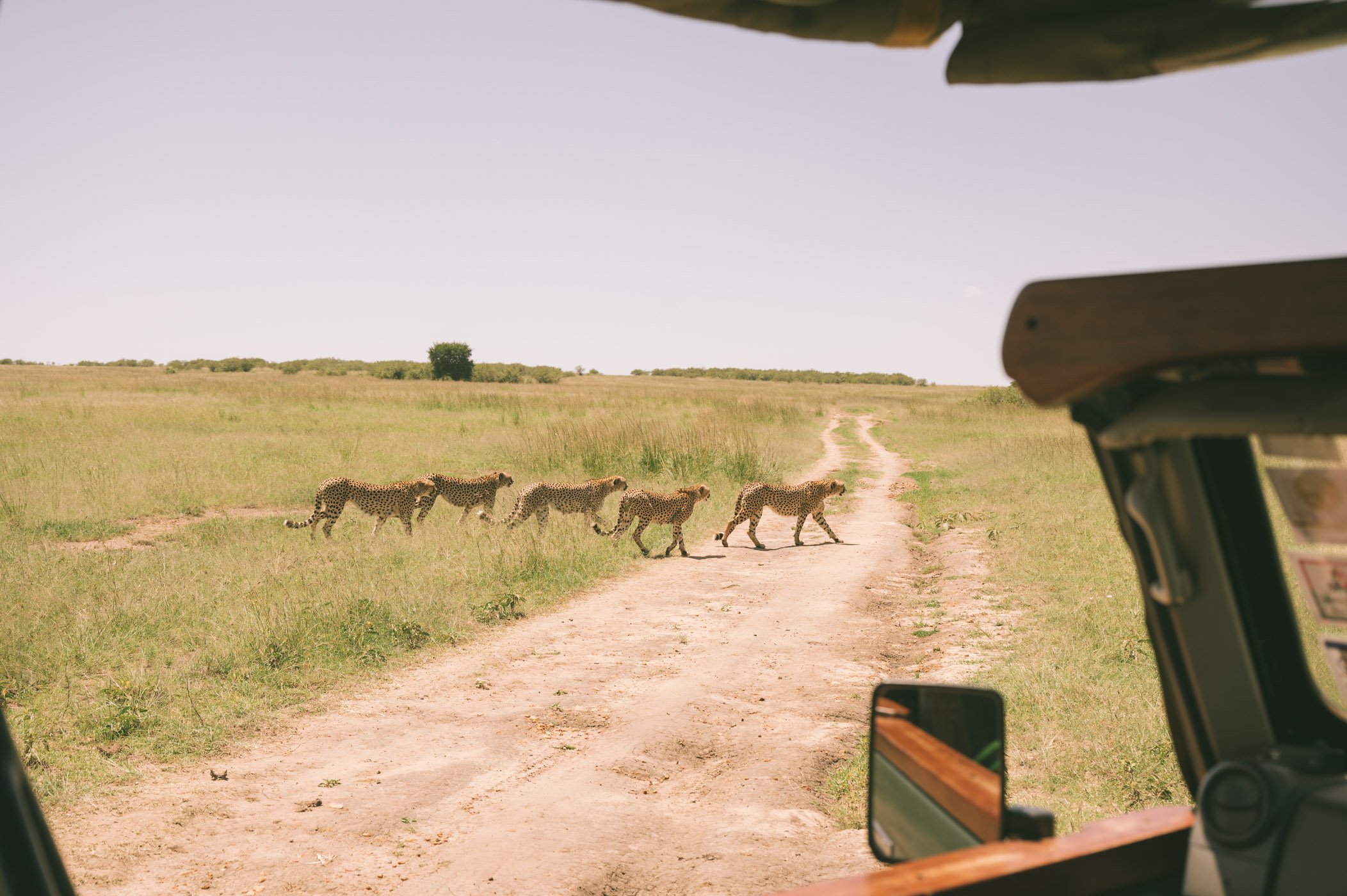 Spoiler alert: We found them – on the way to Cottar’s 1920s camp!
Spoiler alert: We found them – on the way to Cottar’s 1920s camp!
The coalition of 5 cheetah brothers
On a cloudless January day we get picked up at the Maasai Mara Talek gate by our Cottar’s guide named Letura. It’s been six days in the Maasai Mara for us, but in a different region. It’s here – the South East of the Maasai Mara – what the famous cheetah coalition calls their home.
But actually seeing specific wildlife is always game of chance.
Just a few minutes from the gate we see a few cars standing together – so we approach and ask them what they are looking for. They tell us they are waiting for a serval cat, the thad been seen a bit ago. Not much later a few other cars join us who report to have seen a leopard. We wait around a few minutes with neither the serval nor the leopard showing up. So Letura turns around to see what’s happening on the other side. And there it is. We all see a cheetah head poking out from the tall grass. First it’s one, then two, then three and just seconds later the two additional brothers join the coalition.
There they are – all five of them, just like in the movie! The famous coalition of 5 cheetah brothers. Right next to us.

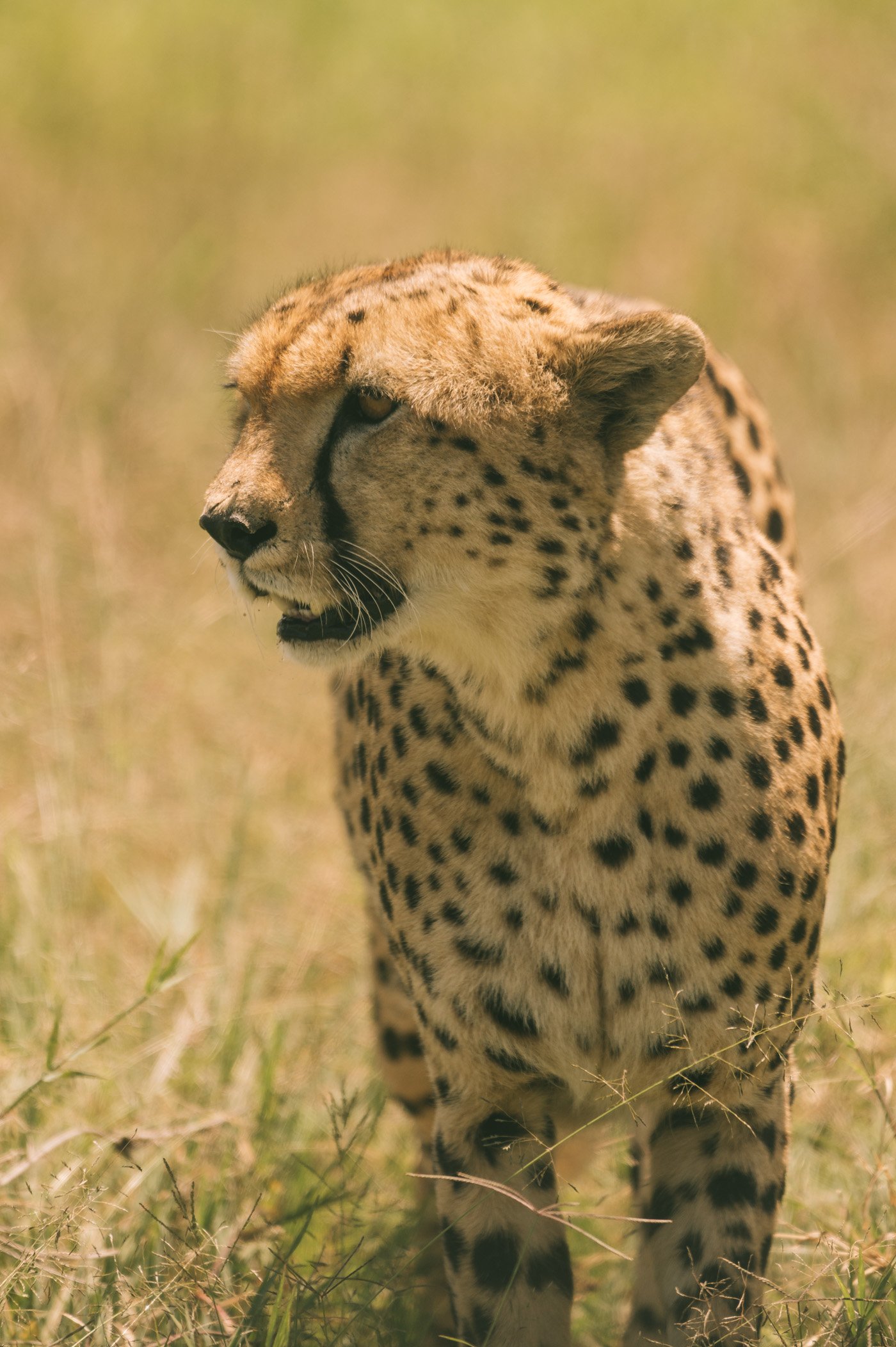
 A gentle kiss is shared amongst two of the five brothers of the famous cheetah coalition.
A gentle kiss is shared amongst two of the five brothers of the famous cheetah coalition.
Let’s just say we’re off to a good start on our last leg of our Kenya round-trip. Cottar’s should be our final destination after 11 incredible days in Kenya, but it doesn’t shy away from any comparison with what we experience until then.
At the border of the Serengeti
But let’s start at the beginning! I obviously had booked our stay at Cottar’s 1920s camp before I had watched the cheetah documentary and also before I knew more about the region where the camp is located. The South-Eastern part of the Maasai Mara is quite different from the Mara Triangle where we had stayed before. Here you can walk along the border to Tanzania – a green border, that is only demarcated by occasional stone plates. It’s here where the thousands of wildebeest and zebras leave Kenya when the circle of the great migration leads them back to the Serengeti.
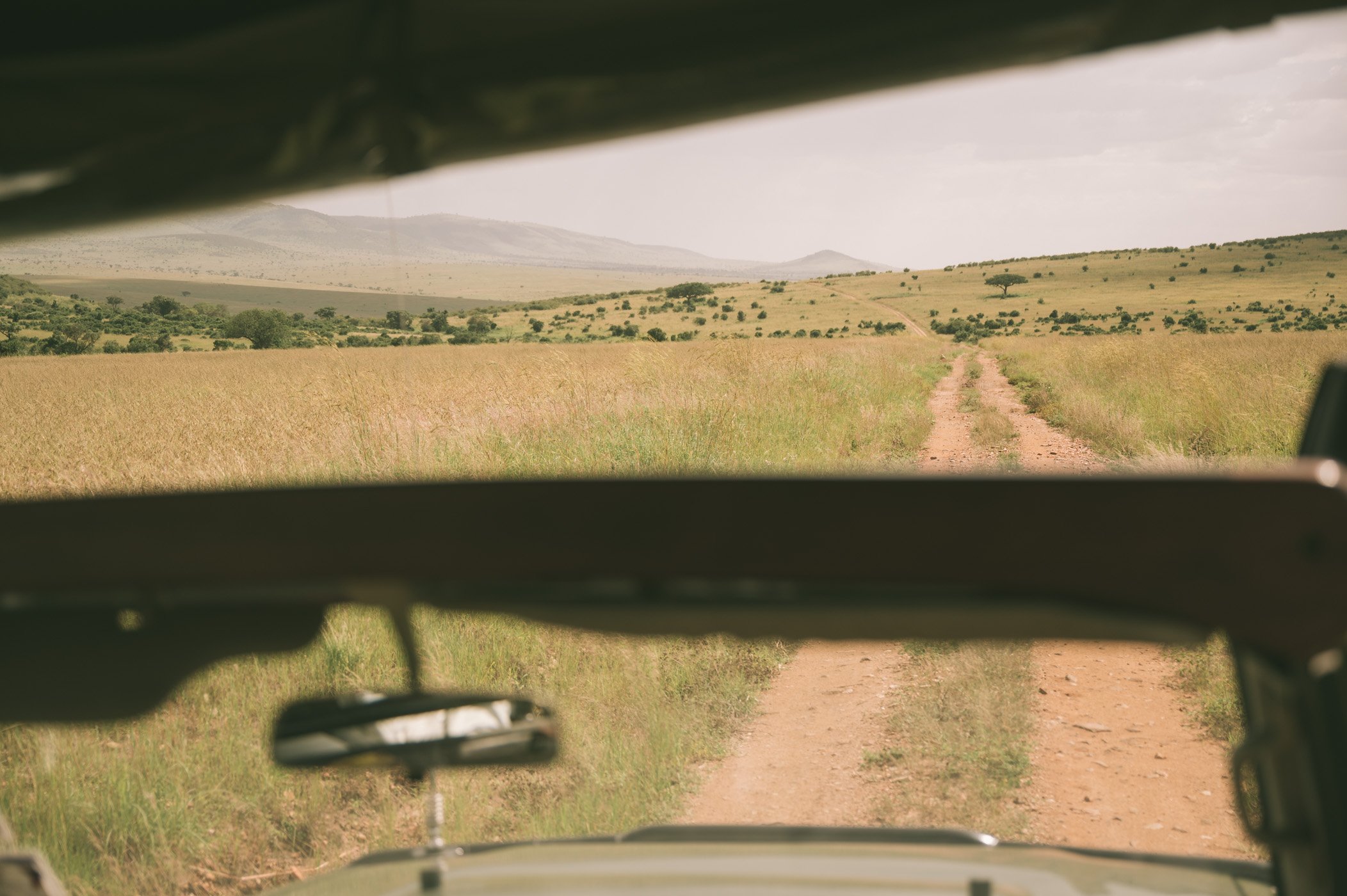 The landscapes in the South East of the Maasai Mara are dominated by rolling hills and some soft escarpements.
The landscapes in the South East of the Maasai Mara are dominated by rolling hills and some soft escarpements.
Step into the time machine at Cottar’s
It’s also here that the Cottar’s family started their safari business over 100 years ago – ahead of the trends. And that’s what the initial reason was why I chose this camp. It offers a peak into the history of safari traveling, while still being in the hands of the same family and has also tailored it’s offering to visitors seeking a retro experience and historical charm. So just my cup of tea!
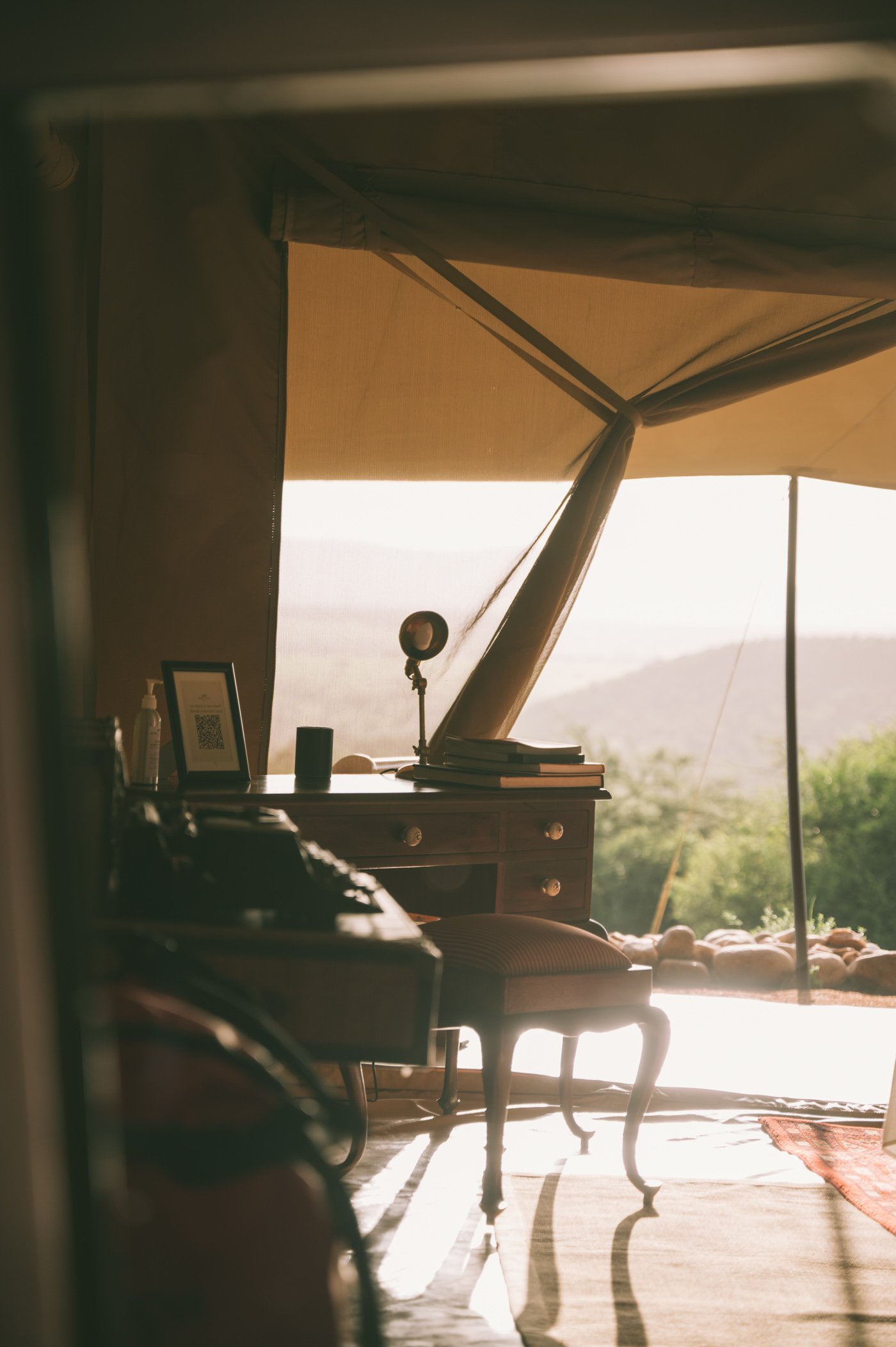
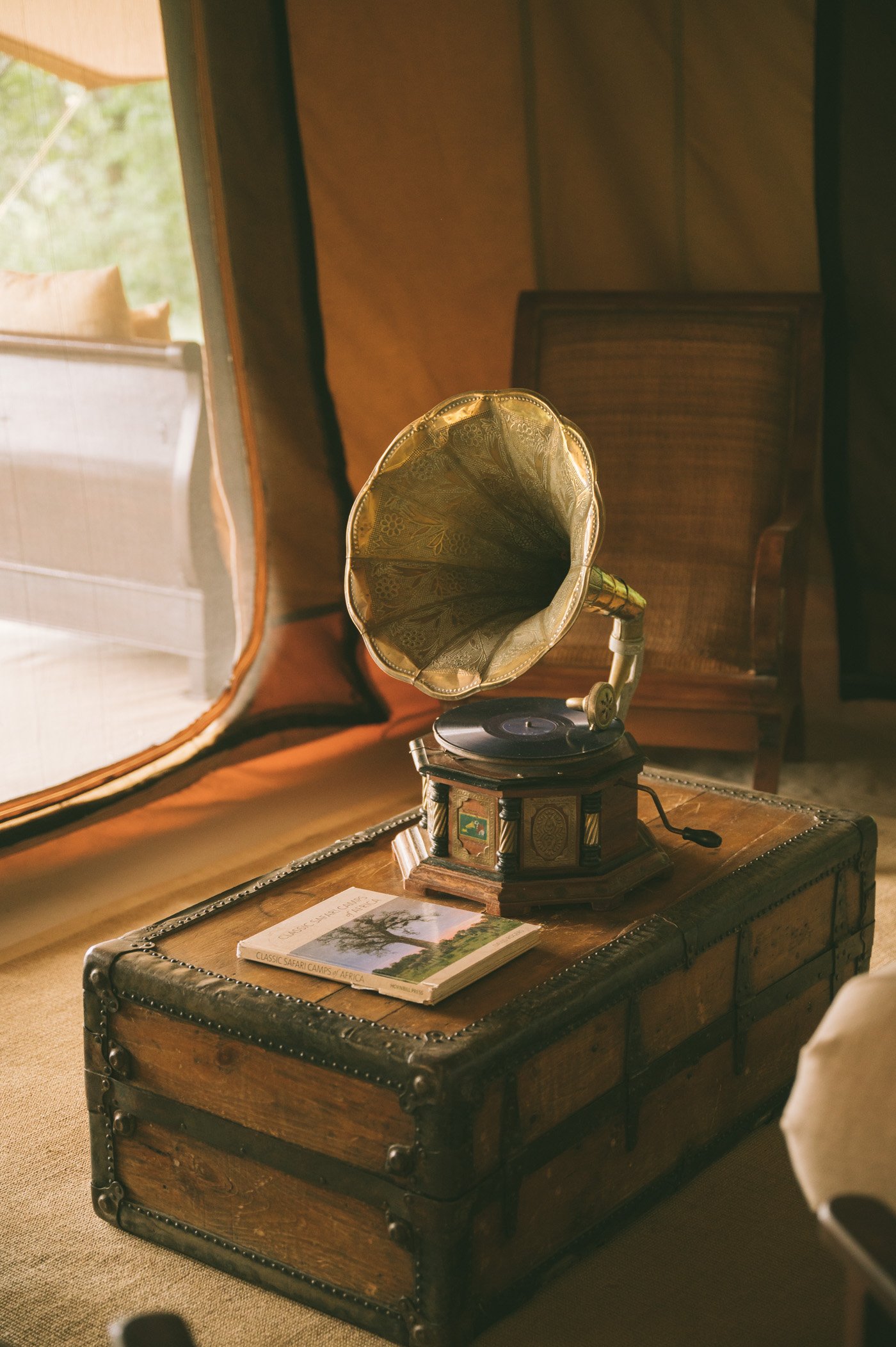
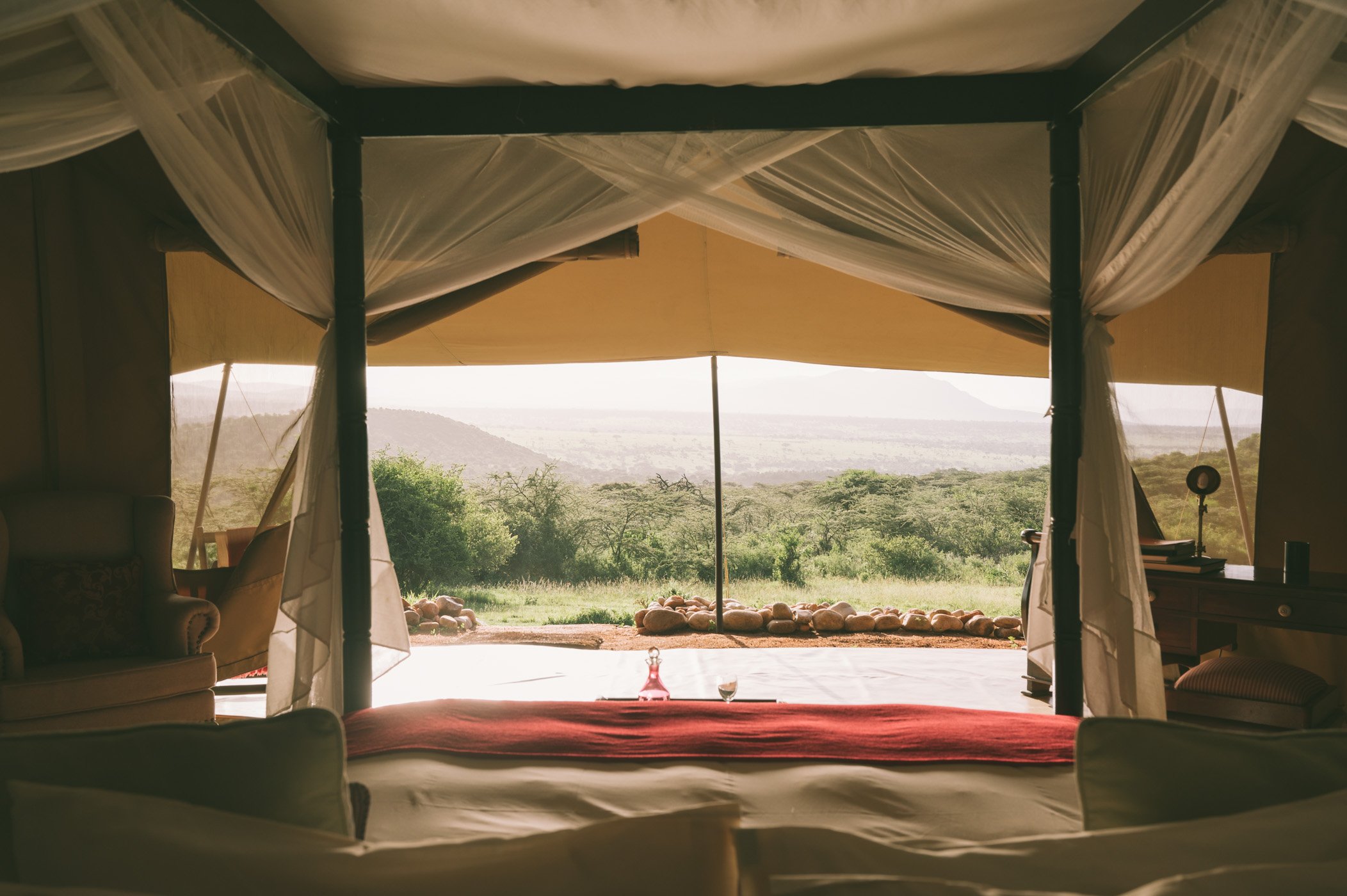 Welcome to Cottar’s 1920s camp – overlooking spectacular views right from your tent!
Welcome to Cottar’s 1920s camp – overlooking spectacular views right from your tent!
Retro vibes deluxe: The iconic canvas bush baths at Cottar’s
The tents of Cottar’s 1920s camp are spread out at the slopes of the Olderkesi community conservancy’s mountain range – overlooking the plains all the way to Tanzania. Upon arrival we plan the next days at the camp and our first item on the list are the famous canvas bush baths they only offer here. While the sun is slowly setting the Cottar’s team sets up two canvas bathtubs right on the terrace of our tent, slowly filling them with hot water and foam, neatly folding a few towels and even bringing fresh bubbly drinks and some cheese and grapes to nibble.
It’s like a scene from another movie – one about adventurous travelers roaming Kenya a hundred years ago, while unwilling to let go of the comforts they are used from back home in England.
We feel like we stepped back in time when we sit in the bubble baths overlooking the sunset from Cottar’s elevated position. The time travel has just begun and shouldn’t stop there.
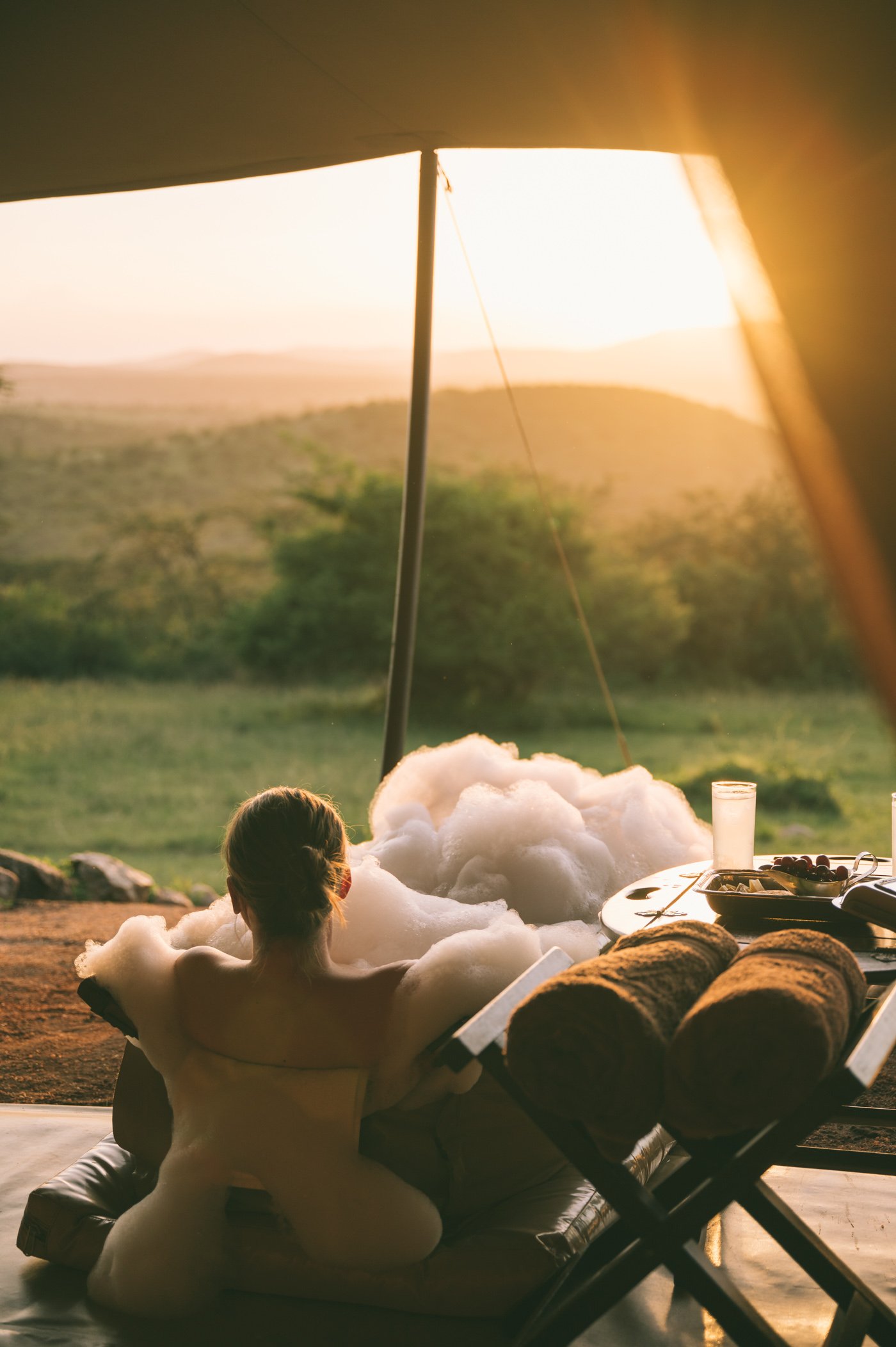
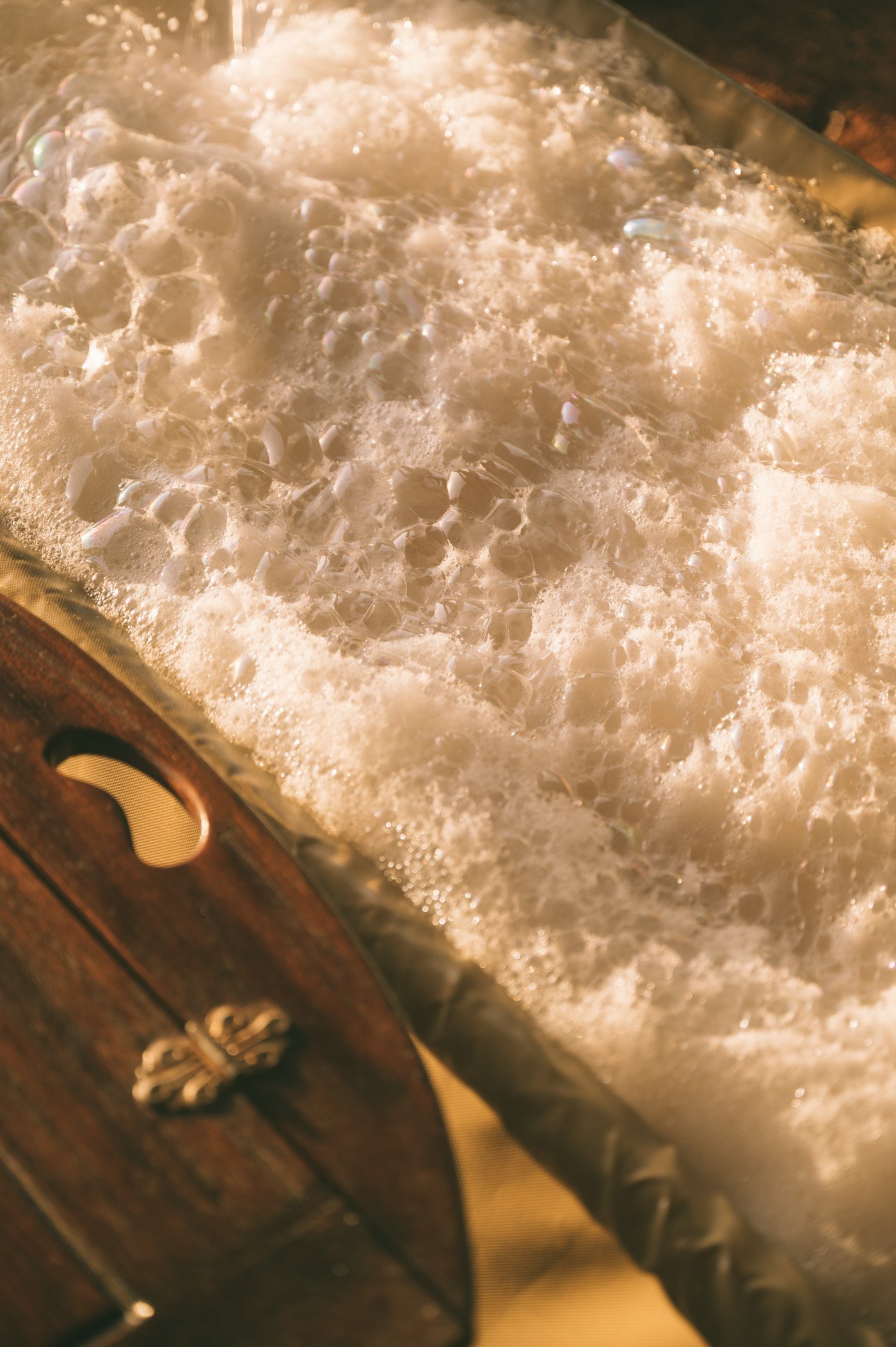
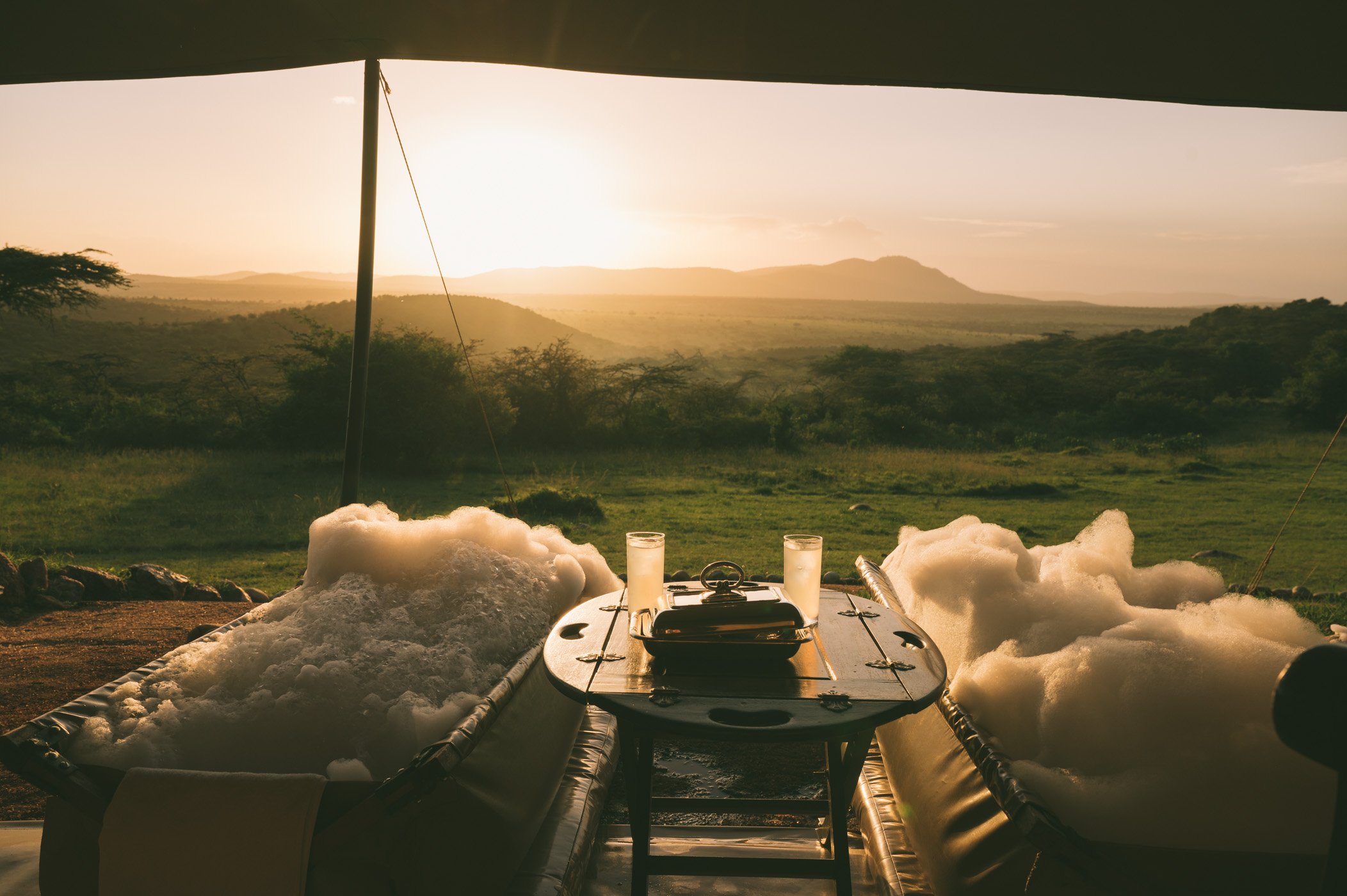 The very best bubble baths we ever took – guaranteed!
The very best bubble baths we ever took – guaranteed!
From typewriters to community conservation goals
The tents are furnished with all sorts of antiques – we even have an old typewriter and some cut glassware inside the tent. Everything seems like it was transported to Cottar’s on board of ships a hundred years ago (although we later learn, that they are constantly shopping on flea markets these days to add to the charm of the camp) 😉
If you are into the 1920s flair you should definitely consider staying at this camp!
It’s all about the flair and charm, but there’s much more to it, then just it’s design. Leading a safari camp in the outskirts of the Maasai Mara comes with it’s own challenges – especially for a period as long as one hundred years. One of the challenges of the last decades has been in relation to population growth and an influx of more and more cattle grazing the lands.
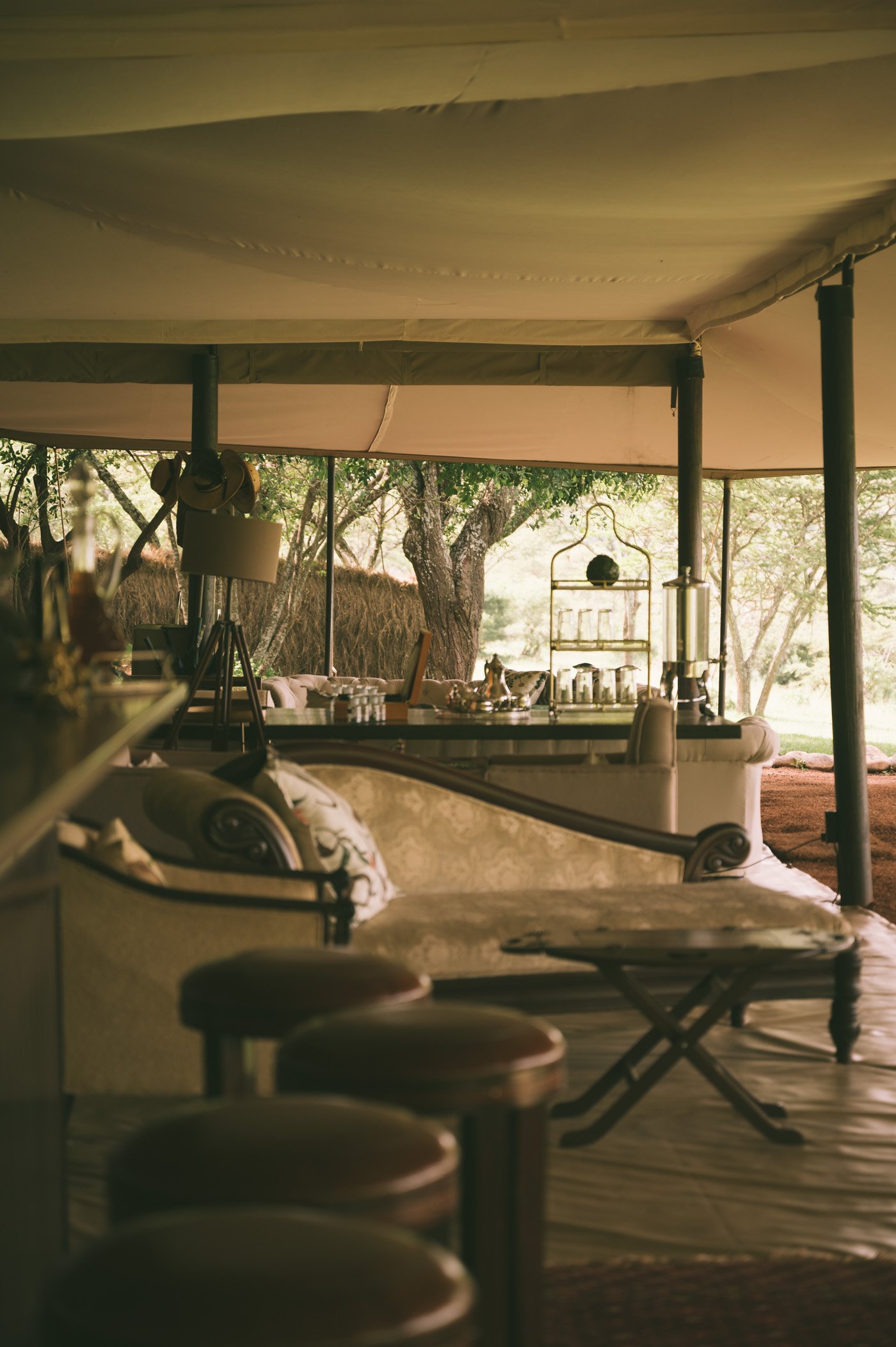
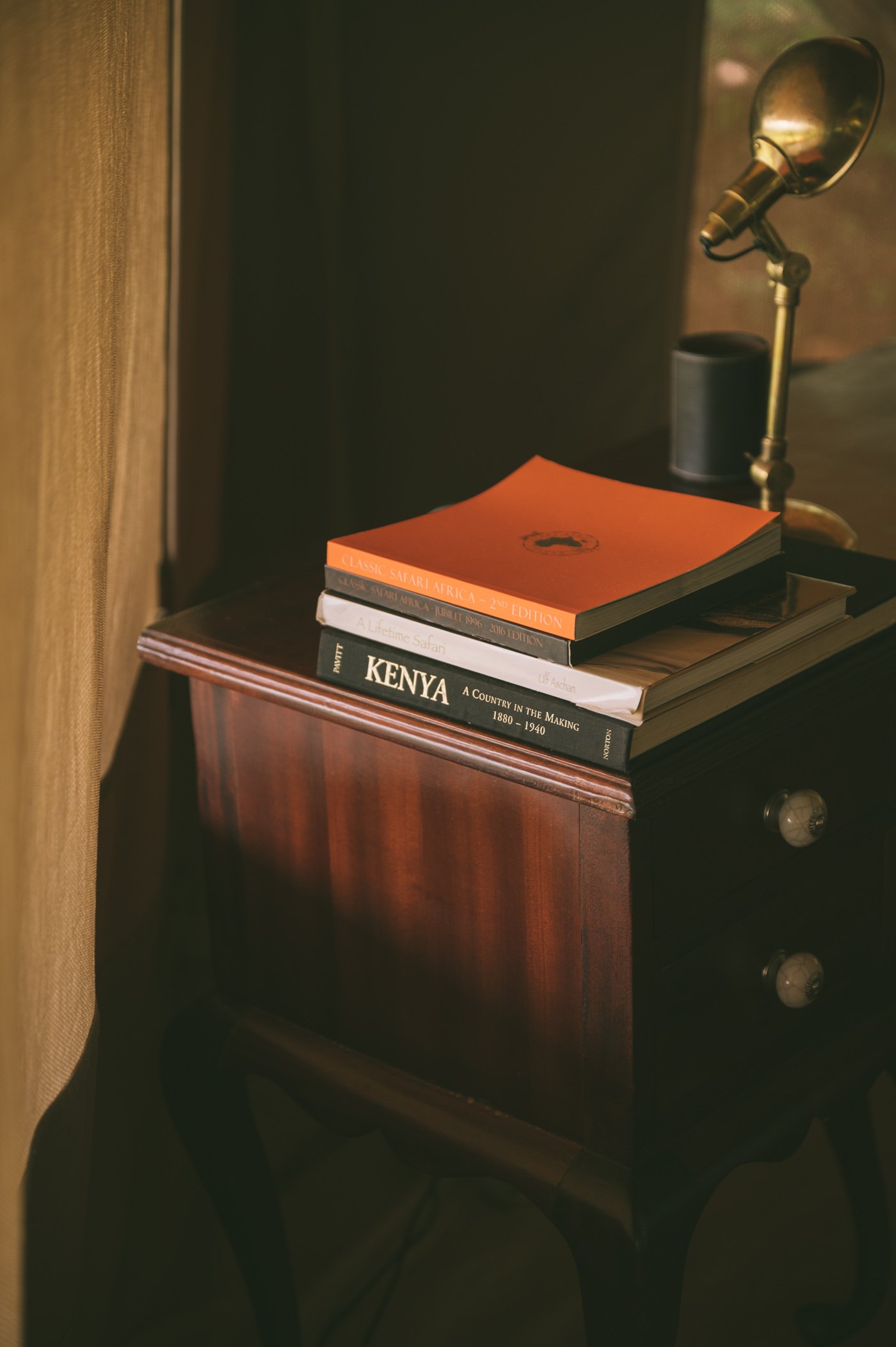
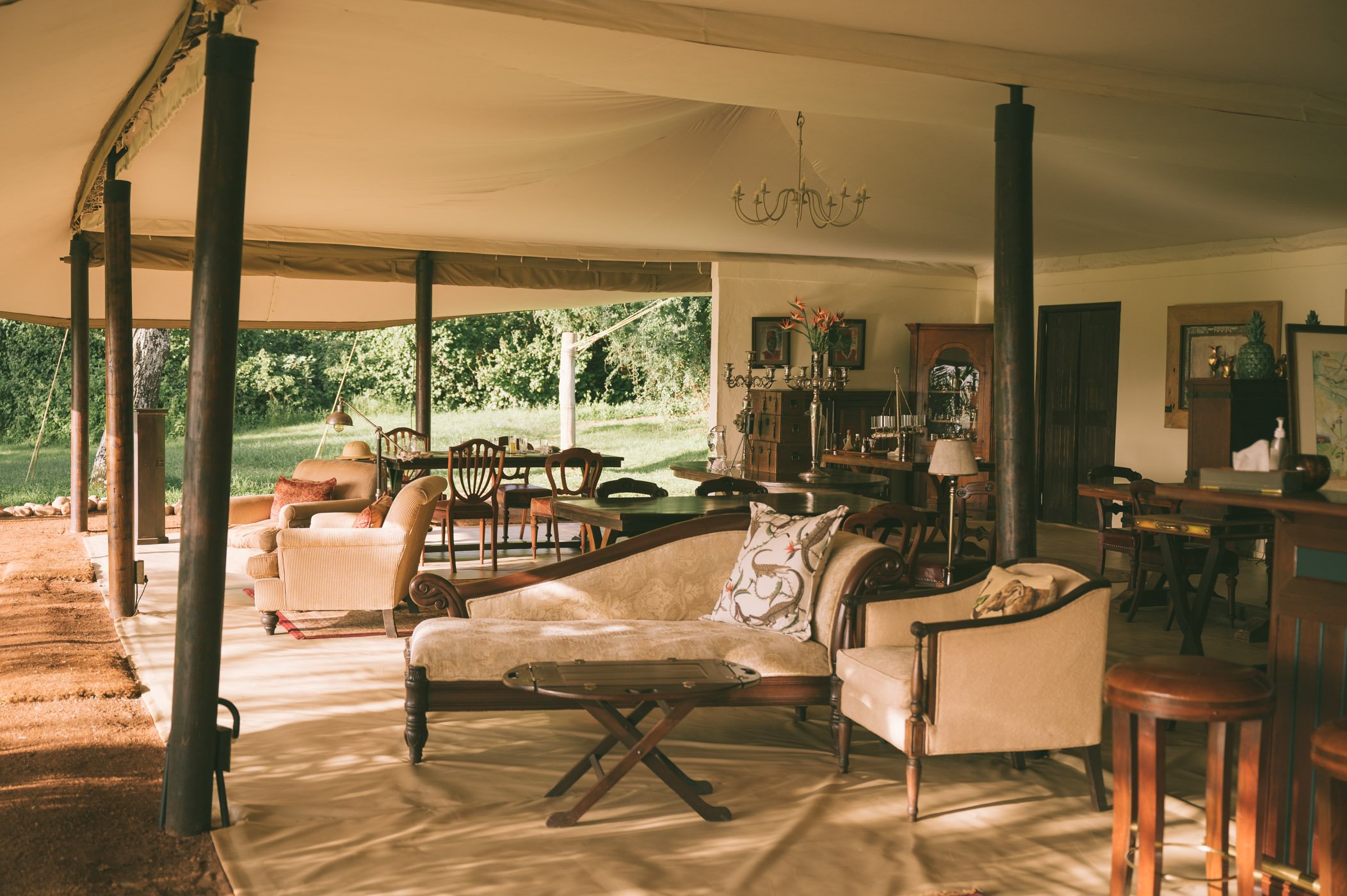 The communal tent at Cottar’s 1920s camp offers old-world charm and comfort.
The communal tent at Cottar’s 1920s camp offers old-world charm and comfort.
The foundation of the Olderkesi Wildlife Community Conservancy
Cottar’s 1920s camp is located on a private stretch of land, that used to be a so called “group ranch”. In 2006 it was transformed into a community conservancy with ambitious wildlife conservation goals with a strong emphasis on benefiting the local Maasai community. In fact Cottar’s set up the Cottar’s Wildlife Conservancy Trust to lease back land from the Olderkesi community with the idea to work on achieving the goals together.
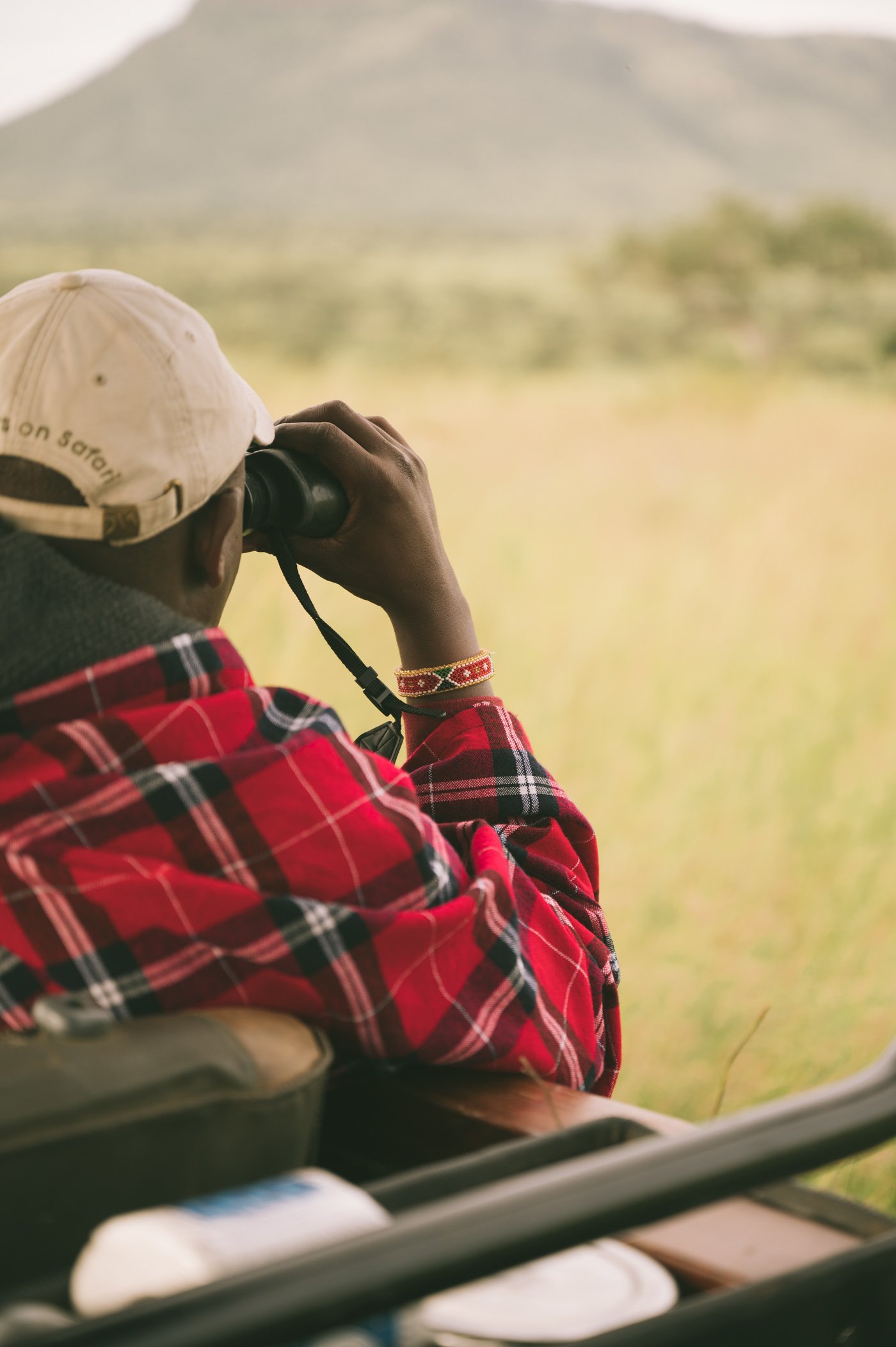
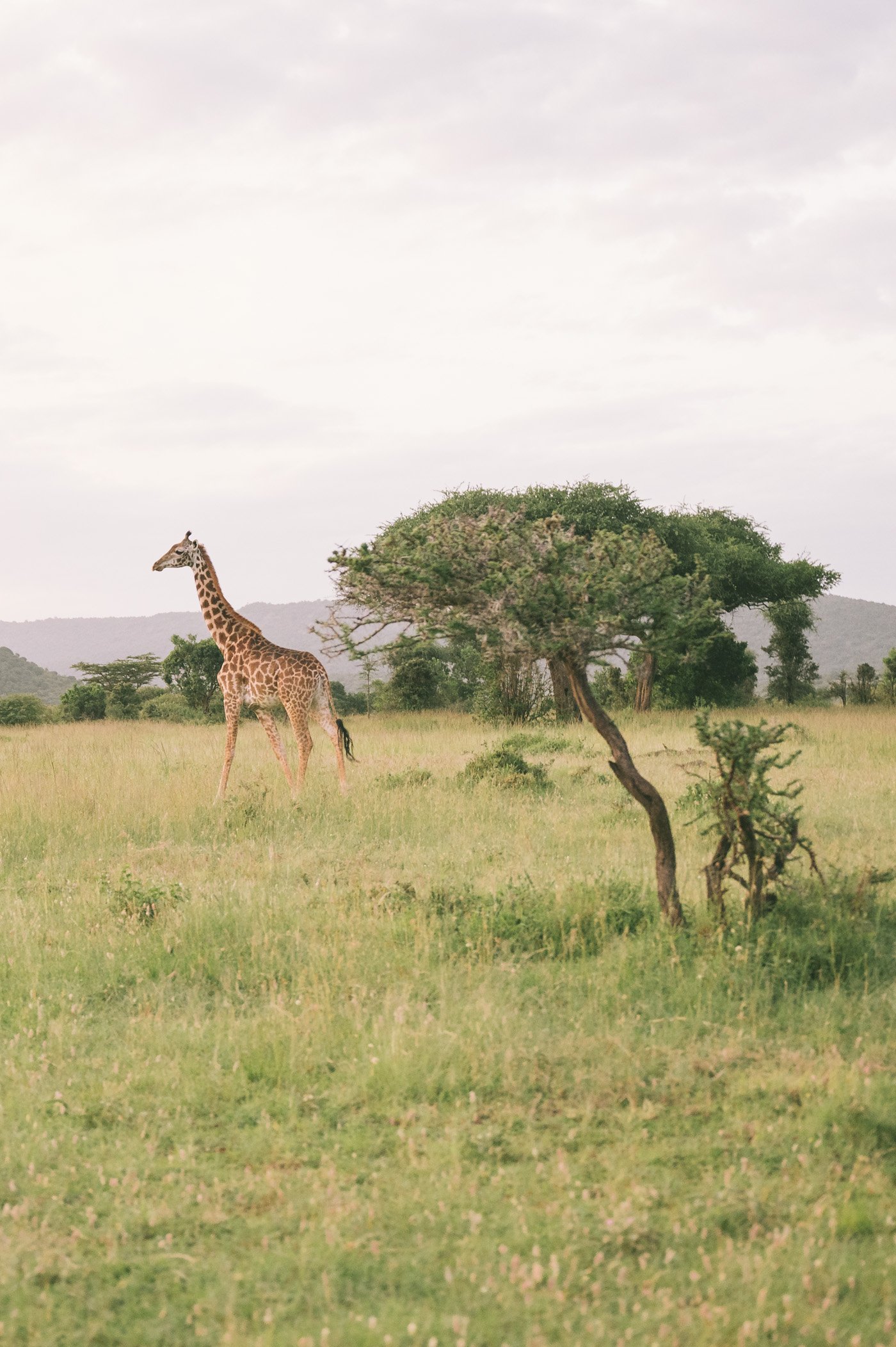
 Wildlife still has to share space with cattle once in a while in the Olderkesi community conservancy – but that’s about to change!
Wildlife still has to share space with cattle once in a while in the Olderkesi community conservancy – but that’s about to change!
Learning more about the goals of the conservancy
We had the pleasure to meet up with Doug Braum, the manager of Cottar’s Wildlife Conservancy Trust (CWCT). He explained the conservancy model and plans, that are now in phase one, where the first part of the conservancy is in process of becoming 100% dedicated to wildlife conservation. The result of phase one is that a group of families are currently moving to another section of the Olderkesi area on a plot of land, that was paid by the trust. This way the families benefit from the wildlife conservation efforts directly, while still being able to maintain their pastoral lifestyle.
This also means that cattle grazing (and other pastoral activities like logging) will stop in the first segment of the Olderkesi conservancy, exactly in the part where Cottar’s 1920 camp is located. The result of this will be an increased influx of wildlife back into the conservancy and higher chances for successful game drives with wildlife sightings.
In fact Doug tells us that the success of the last years of the conservancy are already tangible now and they had wild dogs on the lawn in front of the 1920s camp just recently. The resident leopards, that live close-by to the camp prove to be shy during our two days at Cottar’s, but there’s more to come. With the last cattle moving out of the area Doug is certain, that wildlife will learn they can roam the land undisturbed again within a matter of just days or weeks. The animals are incredibly smart and learn fast when a region becomes safe for them.
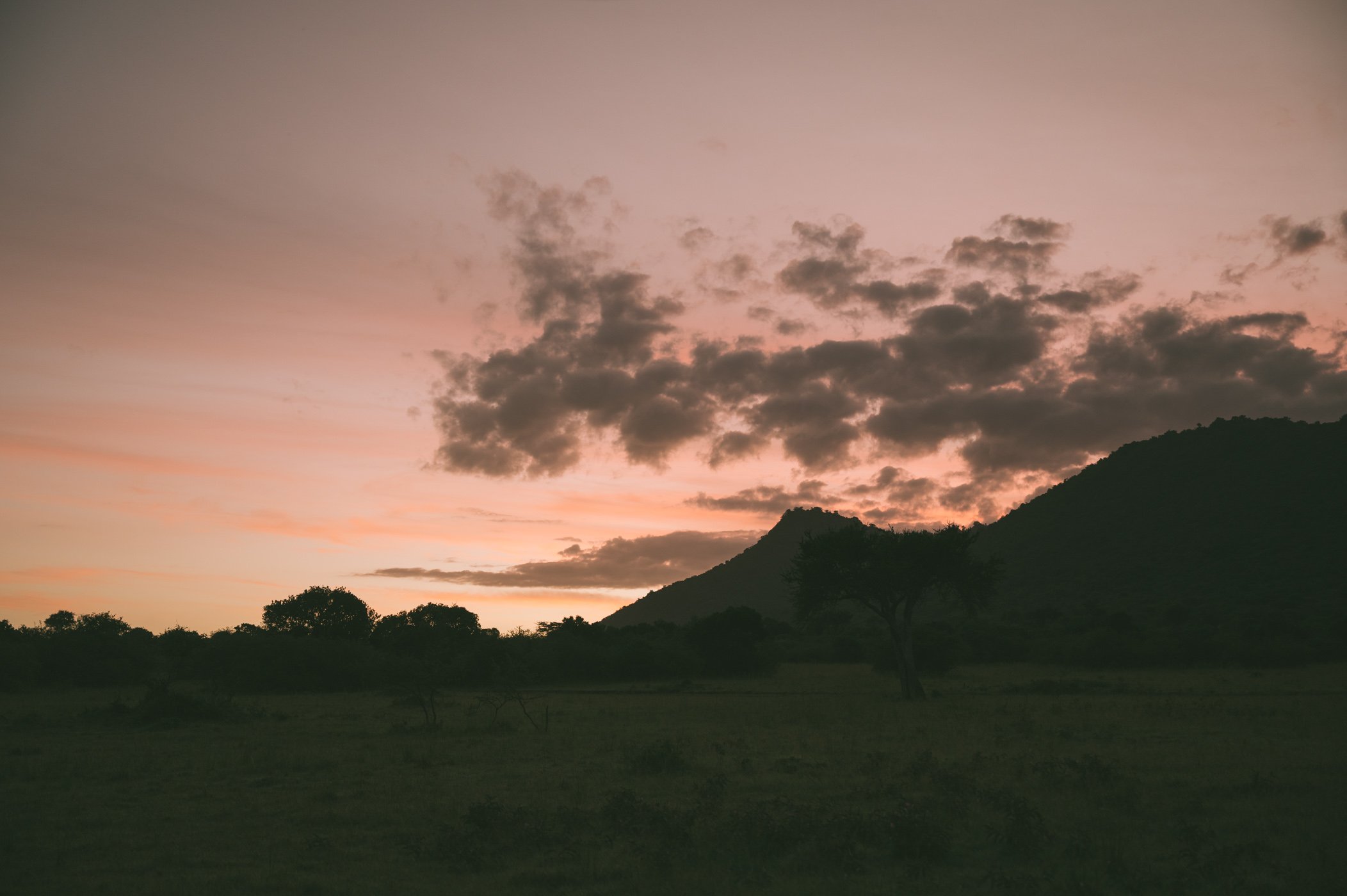 This land is part of a transformational process – from group ranch to wildlife conservancy!
This land is part of a transformational process – from group ranch to wildlife conservancy!
The future of Cottar’s: More space for wildlife
All these developments are promising for Cottar’s and will add to the appeal of the camp. While we did see many giraffes, buffalos and so on – our cat sightings were limited to parts of the Maasai Mara National Reserve, that are about 1-2 hours of driving away from Cottar’s 1920s camp. It’s not that they are impossible close to the camp, but less likely in an area where you still see herds of cows today.
This will change in 2021 and we can’t wait to see how this will affect the wildlife sightings at Cottar’s!
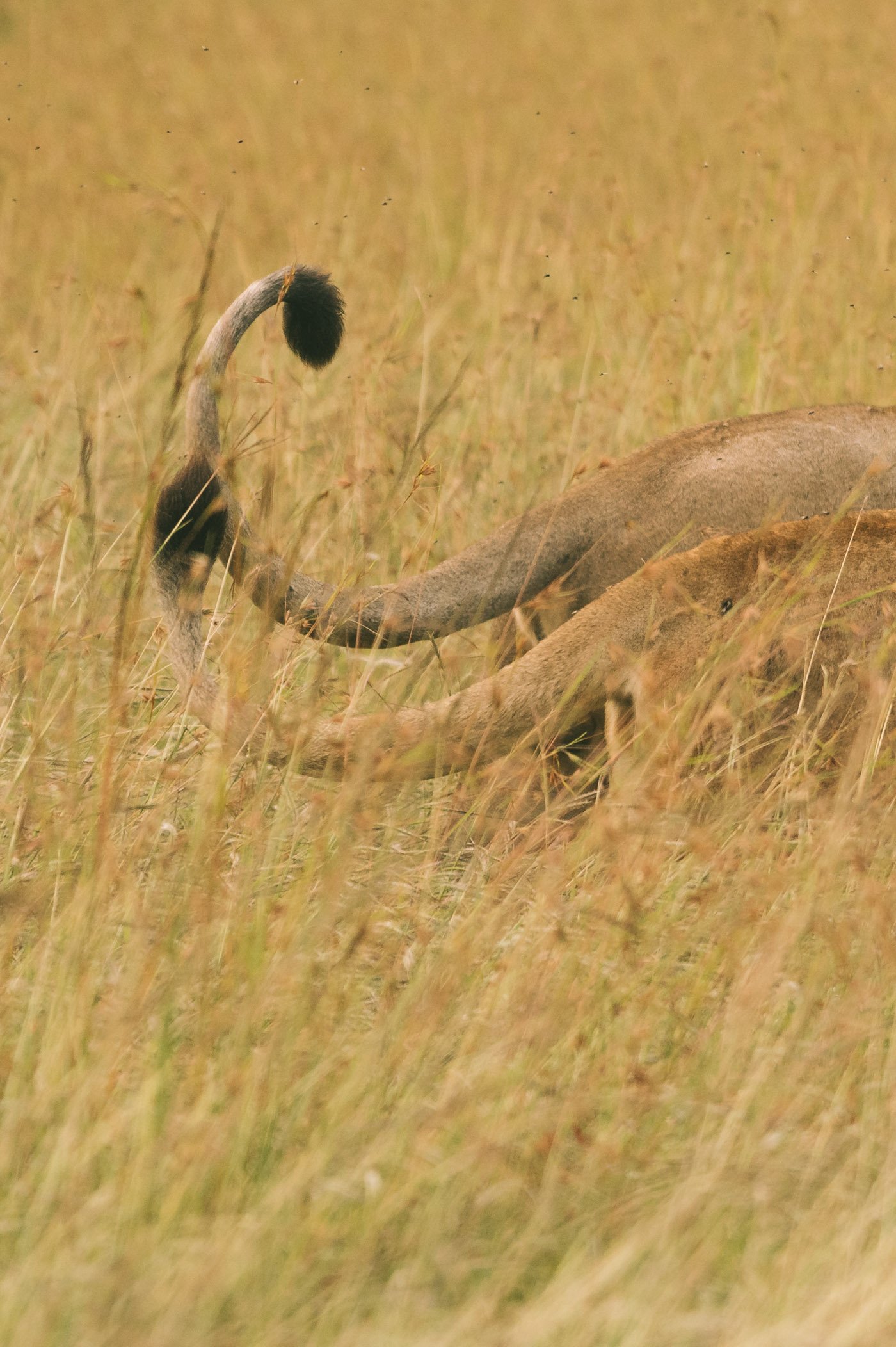
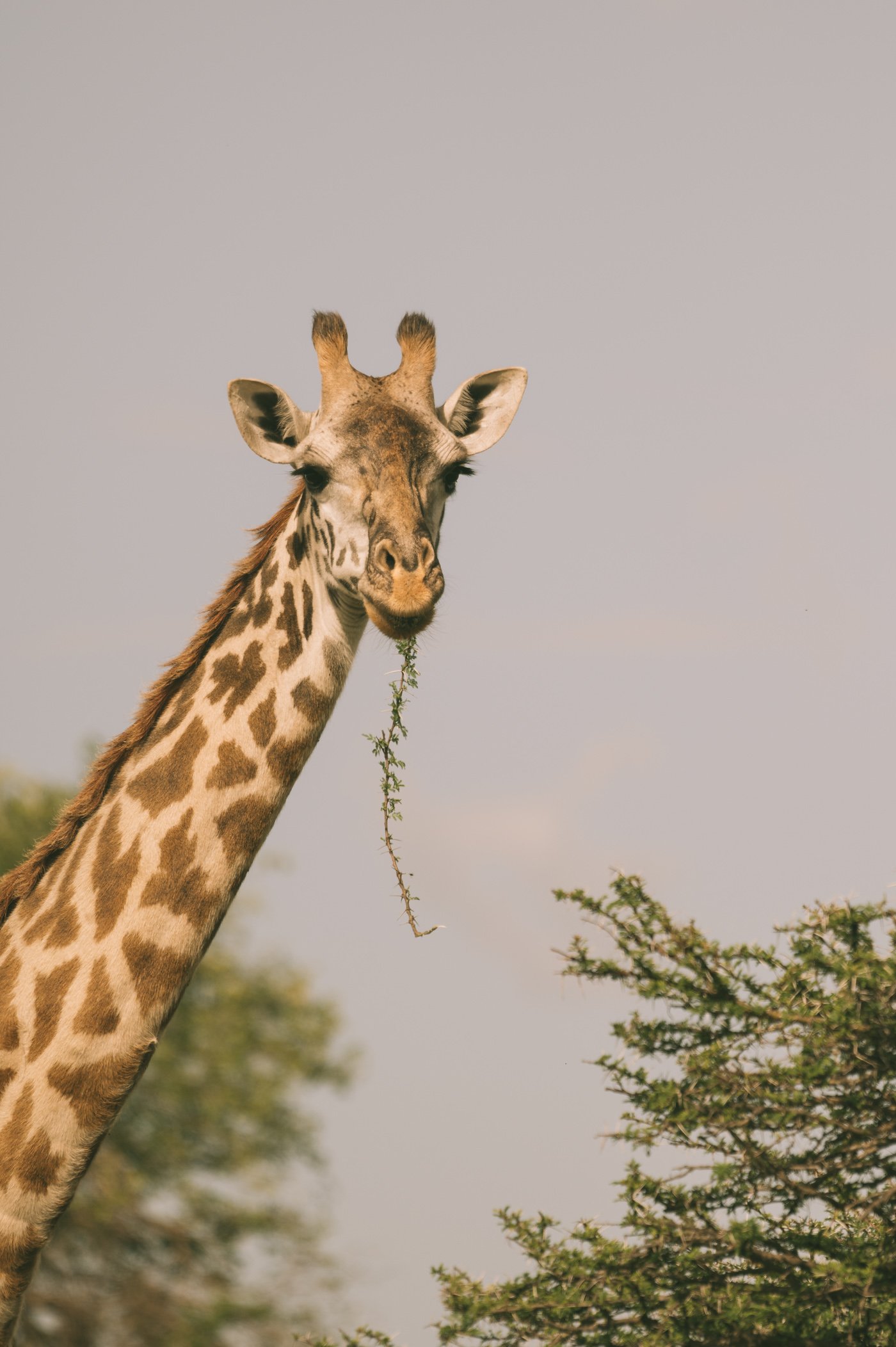
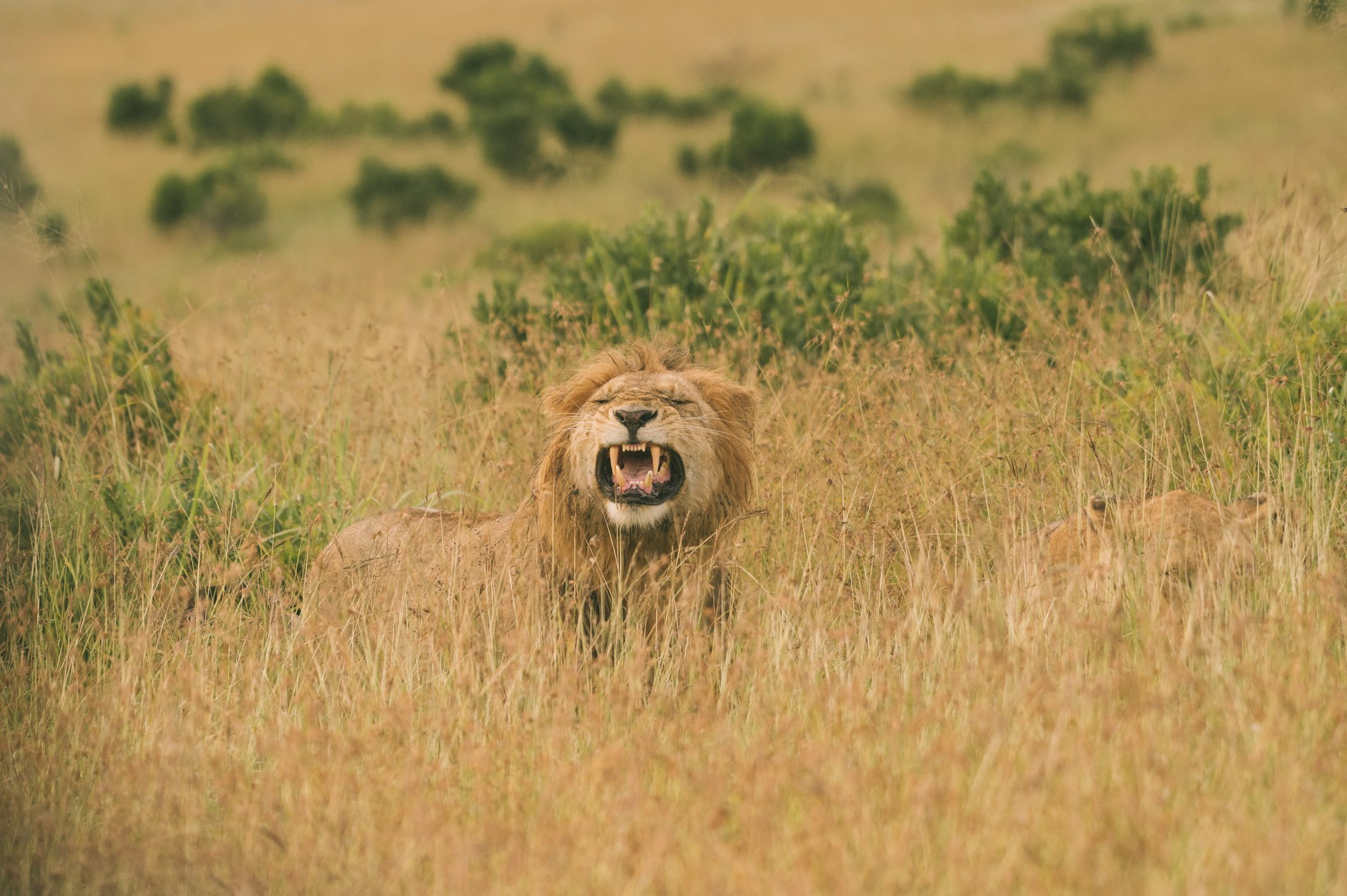 While giraffes are abundant around Cottar’s lions have yet to return to the surroundings of the camp.
While giraffes are abundant around Cottar’s lions have yet to return to the surroundings of the camp.
We saw these two mating lions about a one hour’s drive away from the camp.
What makes Cottar’s special?
If you’re planning a trip to Kenya there’s many things to consider. But if you’re into retro vibes and staying in a camp, that is run by the oldest established and continuing safari family in Africa this is the right place for you. Here’s some more reasons why you should book a stay at Cottar’s 1920s camp:
- Family-owned and run lodge
- Private concession – no other vehicles around
- Professionally trained Maasai guides and staff at the lodge
- Unique experiences like the canvas bush baths
- Conservation learning experiences like meet-ups & talks with the female ranger unit, visits of the raptor rescue station, etc.
- Supporting the establishment of the Olderkesi wildlife conservancy that serves as essential wildlife corridor between the Maasai Mara and the Serengeti
Staying under the cream-coloured canvas tents of Cottar’s 1920s camp has a very unique charm. Additionally Cottar’s also offers a private Bush Villa with it’s own 25 meter swimming pool that can be rented to families or larger parties with up to 10 guests.
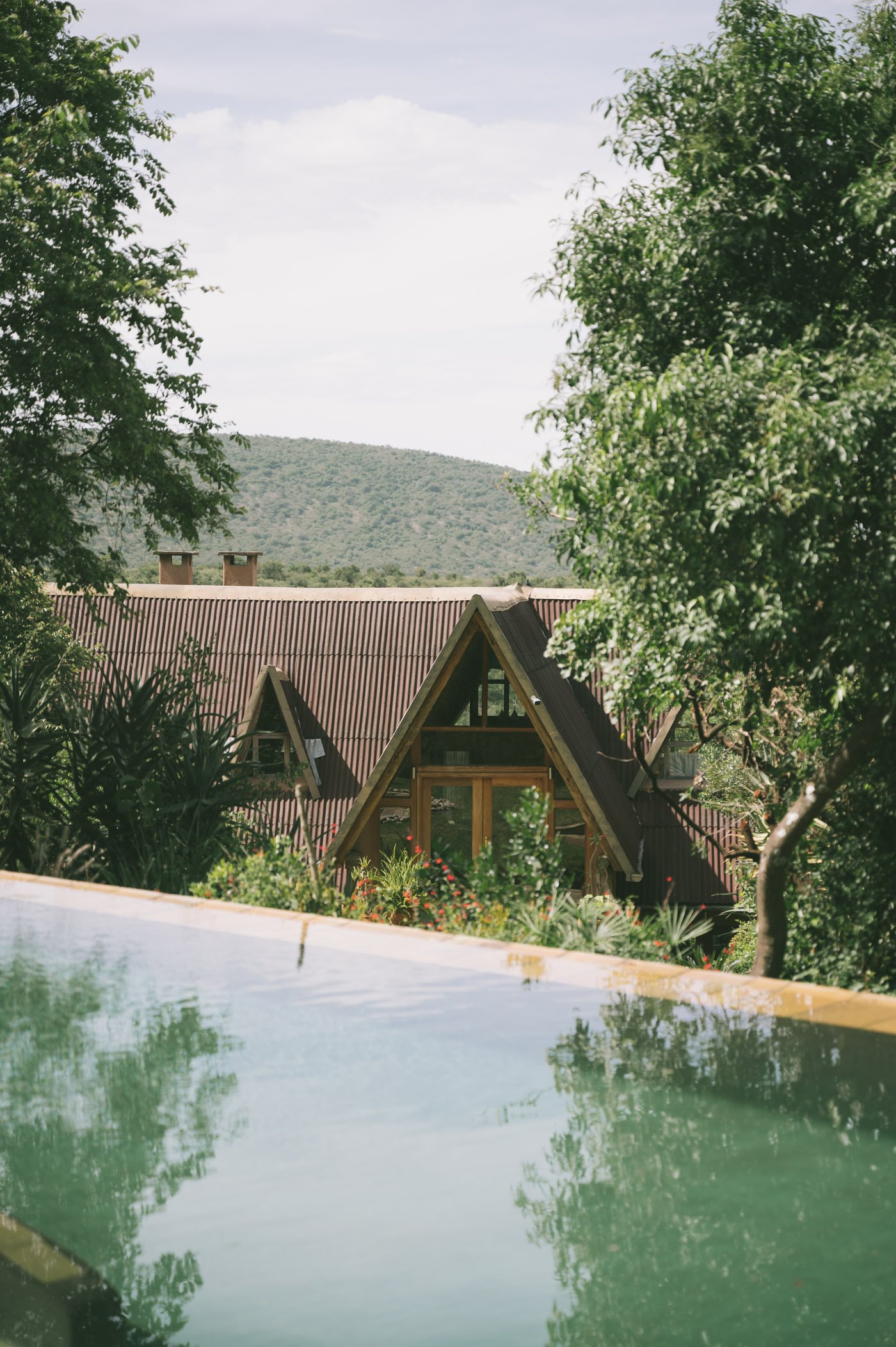
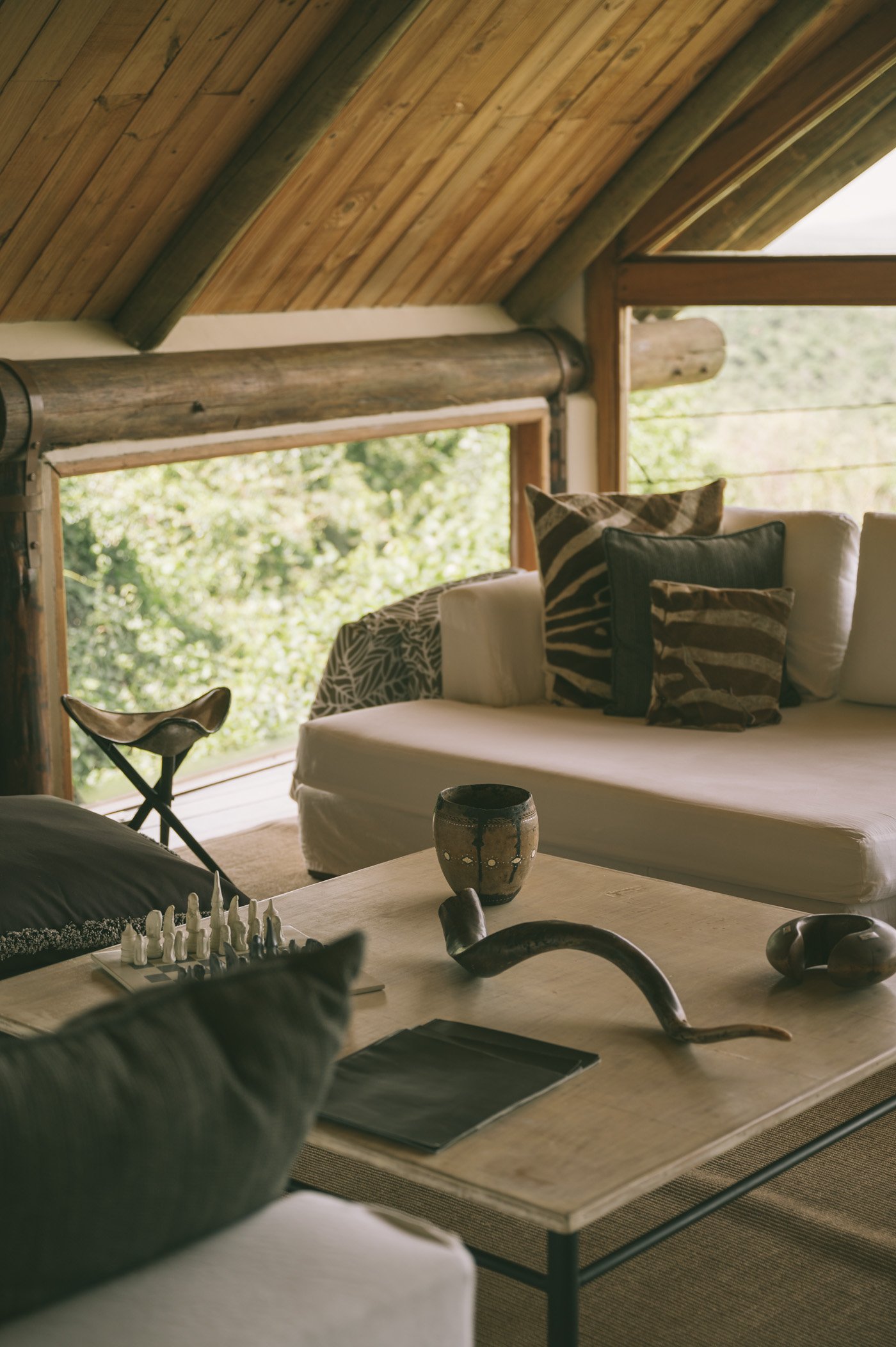
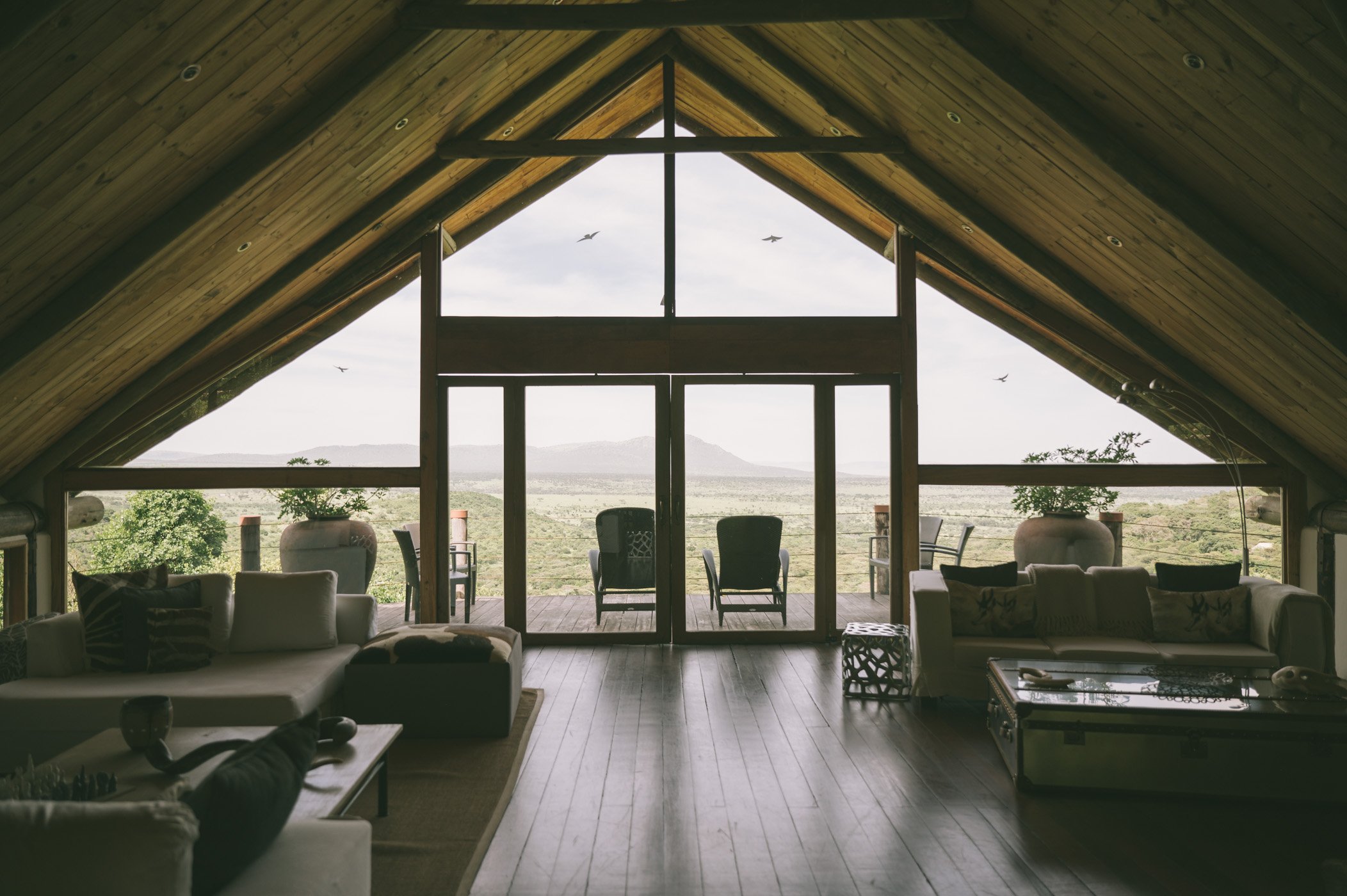 If you prefer a private safari home – Cottar’s Bush Villa offers plenty space for 10 guests of one party or family.
If you prefer a private safari home – Cottar’s Bush Villa offers plenty space for 10 guests of one party or family.
The newly added “Explorer’s tent” tells more about the history of the Cottar’s enterprise, but also displays a large array of interesting items, like an animal poop collection 😉 Guests are encouraged to get guided tours of the
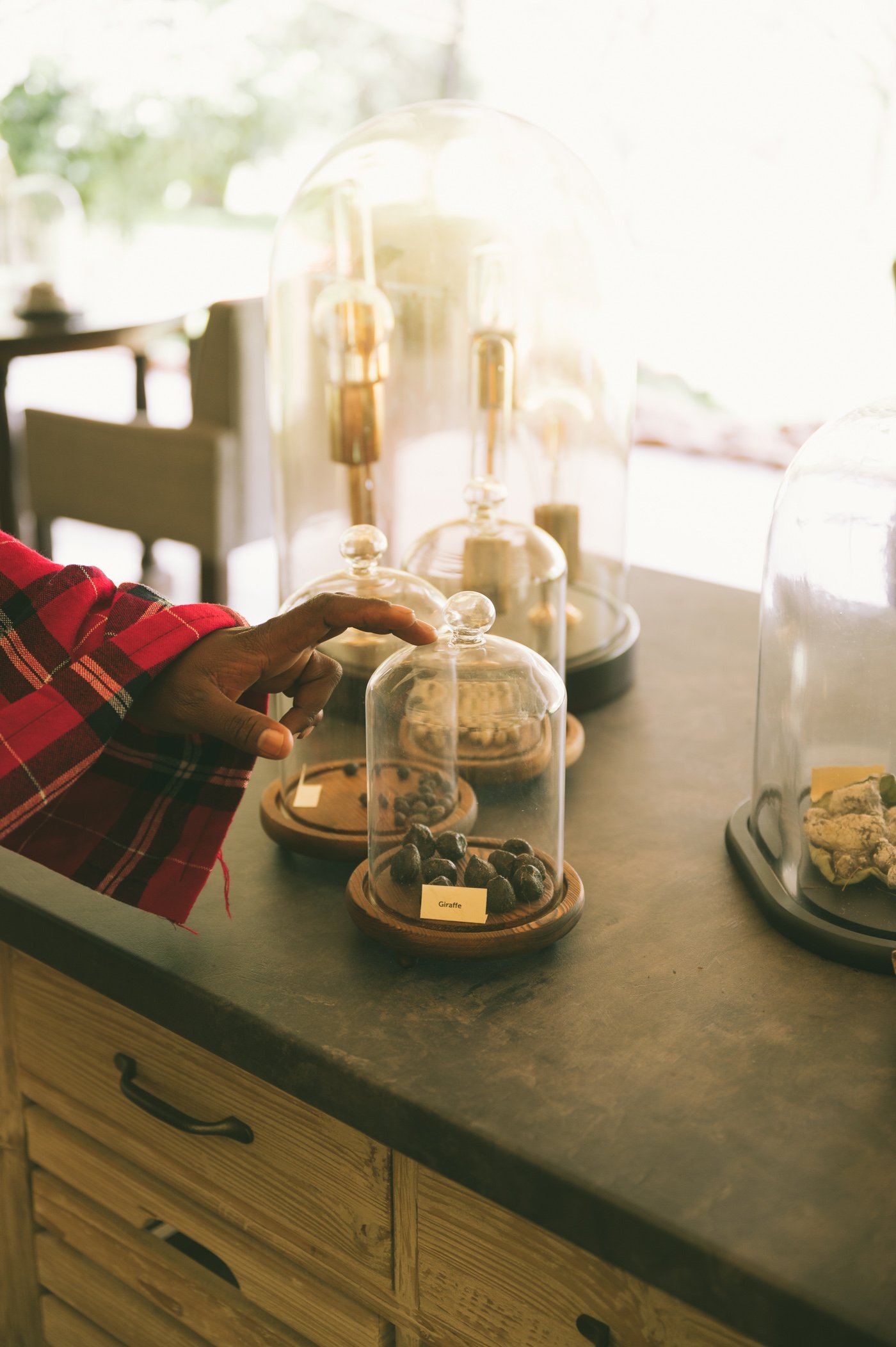
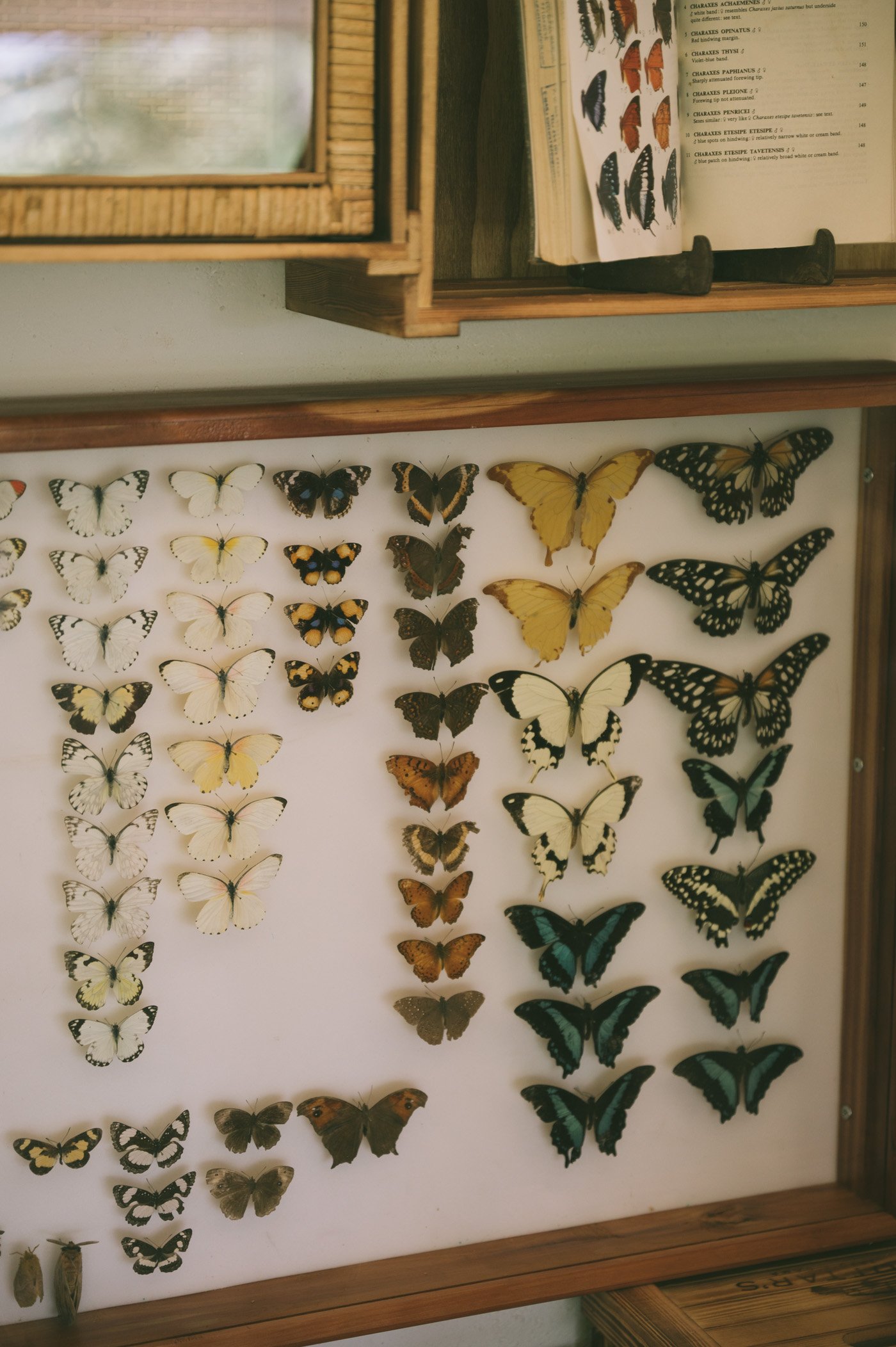
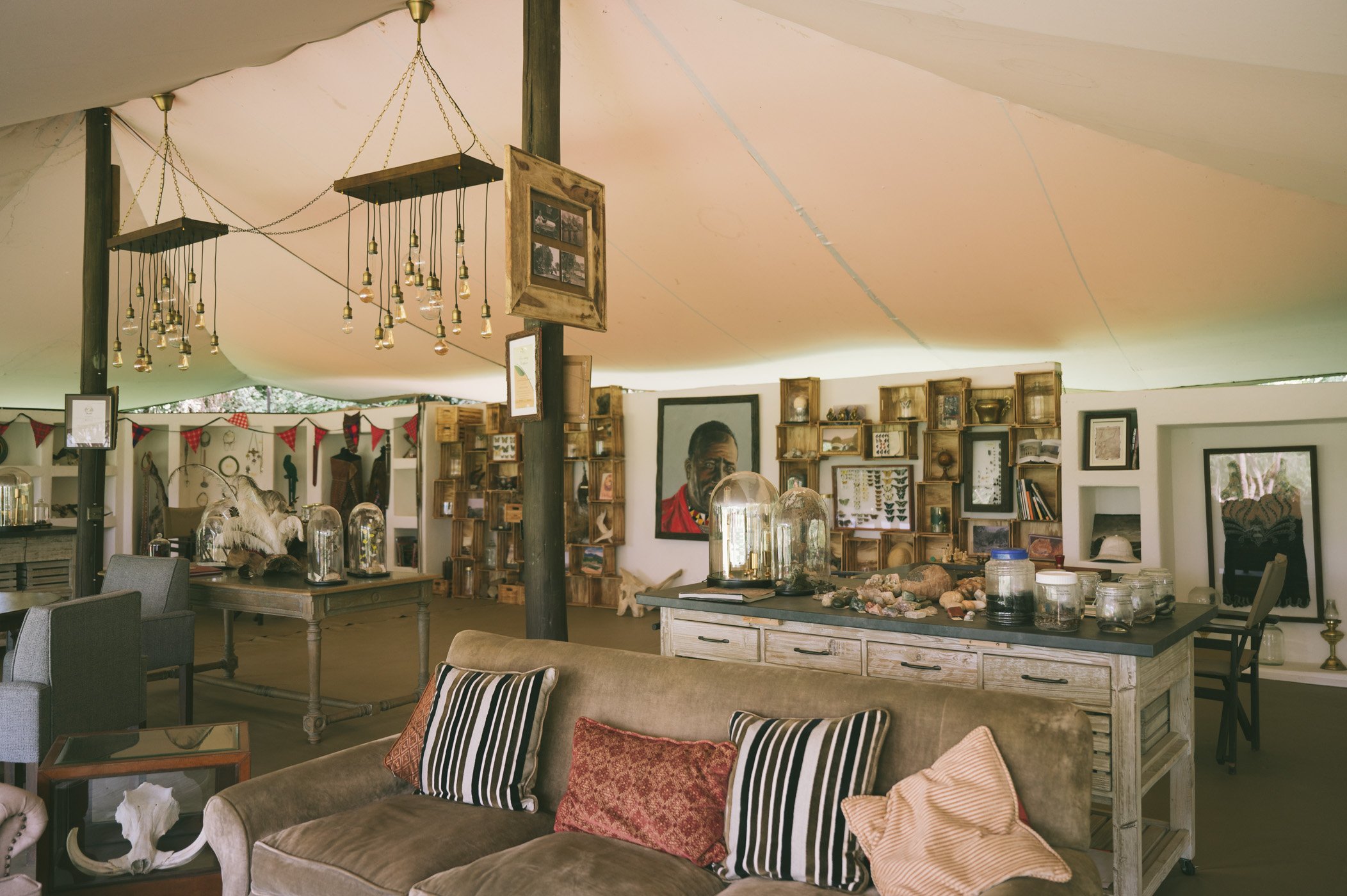 The new Explorer’s tent at Cottar’s 1920s camp in Kenya showcases the history of the area, Maasai culture and the Cottar’s family.
The new Explorer’s tent at Cottar’s 1920s camp in Kenya showcases the history of the area, Maasai culture and the Cottar’s family.
How to get to Cottar’s 1920s Safari Camp
We came to Cottar’s 1920s Camp from the Mara Triangle by car. Usually guests fly in to Cottar’s Private airstrip directly or to Keekorok. Our drive took us all the way from the Northwest of the Maasai Mara to the Southeastern corner. Luckily this is not just a “transfer”, but comes down to a nice extended game drive. In fact we got lucky and saw the famous coalition of 5 cheetahs close to Talek gate – and therefore would even recommend to drive in via that route if it makes sense in your itinerary.
Cottar’s 1920s Safari Camp
- Ol Derkesi Community Conservancy, Nairobi, Kenia
- Starting at 963 US$ per person + 116 US$ Conservancy Fee
- Includes full board, water, tea & coffee, local drinks – soft drinks, house wines, beers, & select spirits, safari activities, Cottar’s Warrior School – Kids entertainment program, Cottar’s Private Airstrip transfers, Canvas Bush Baths, Transfers to cultural visits, Laundry, Nanny

